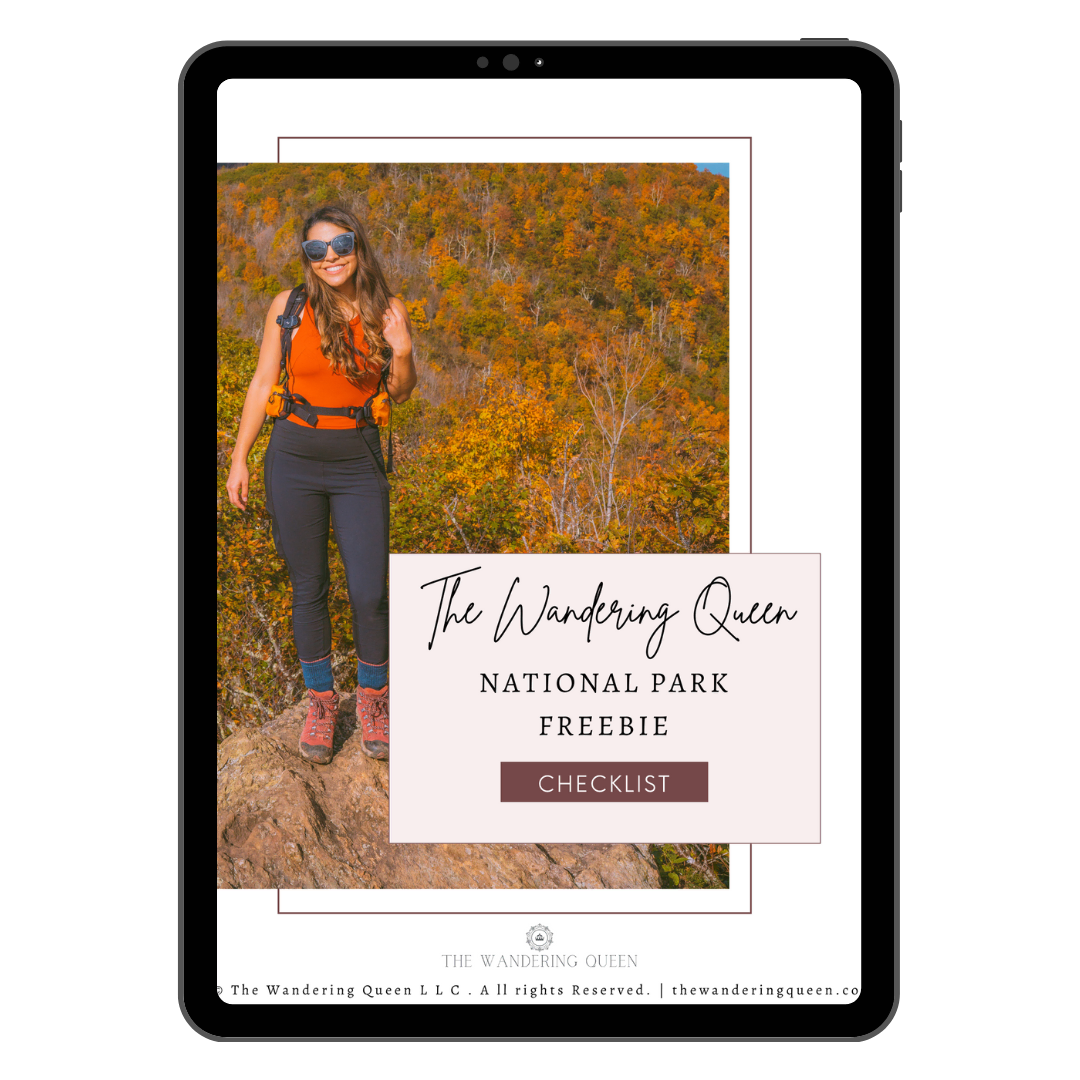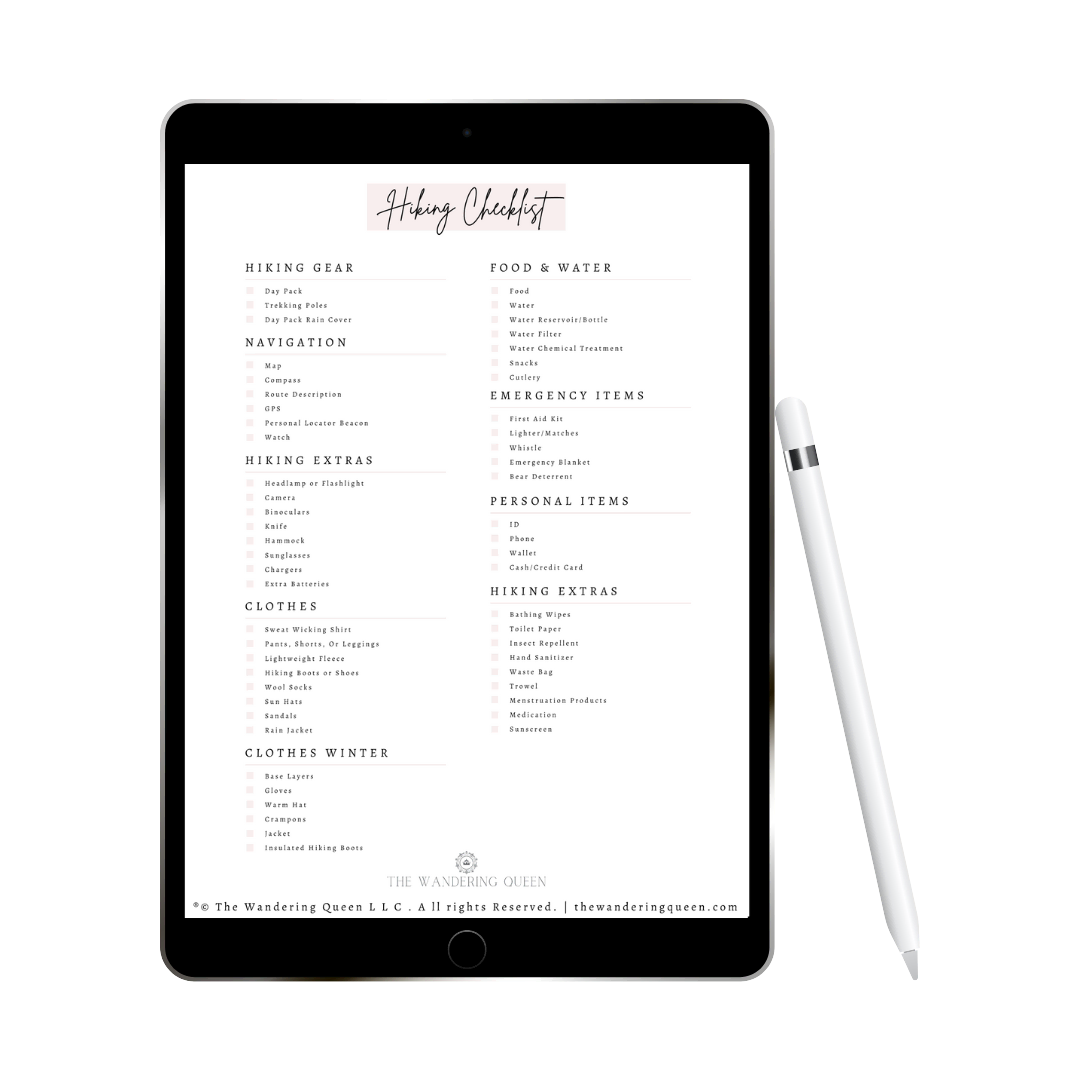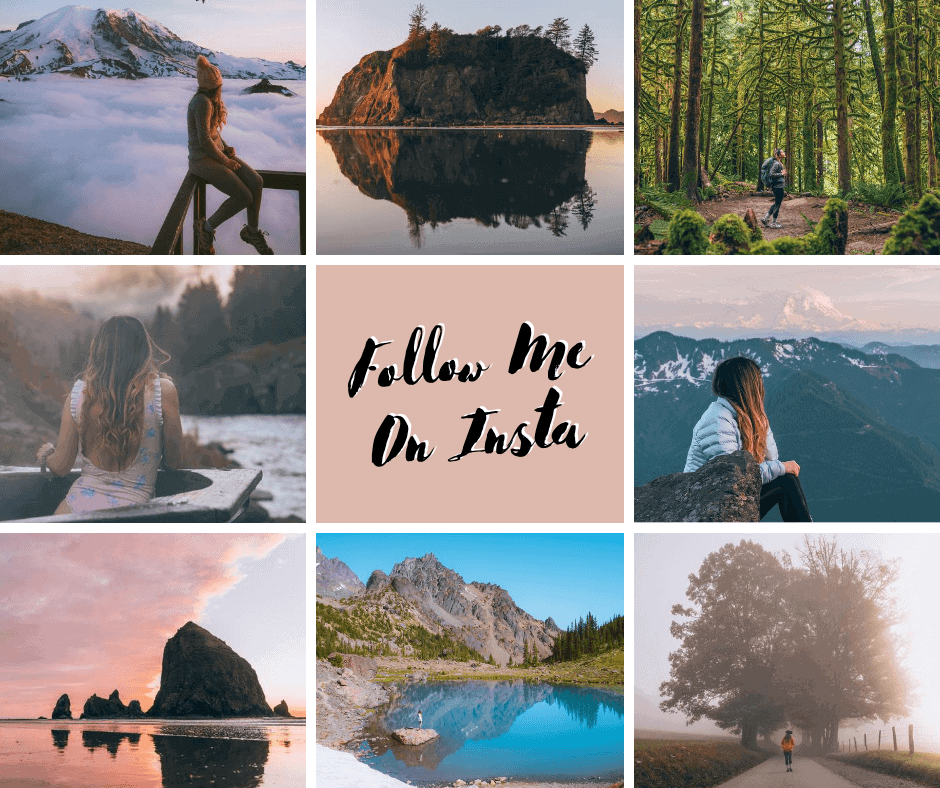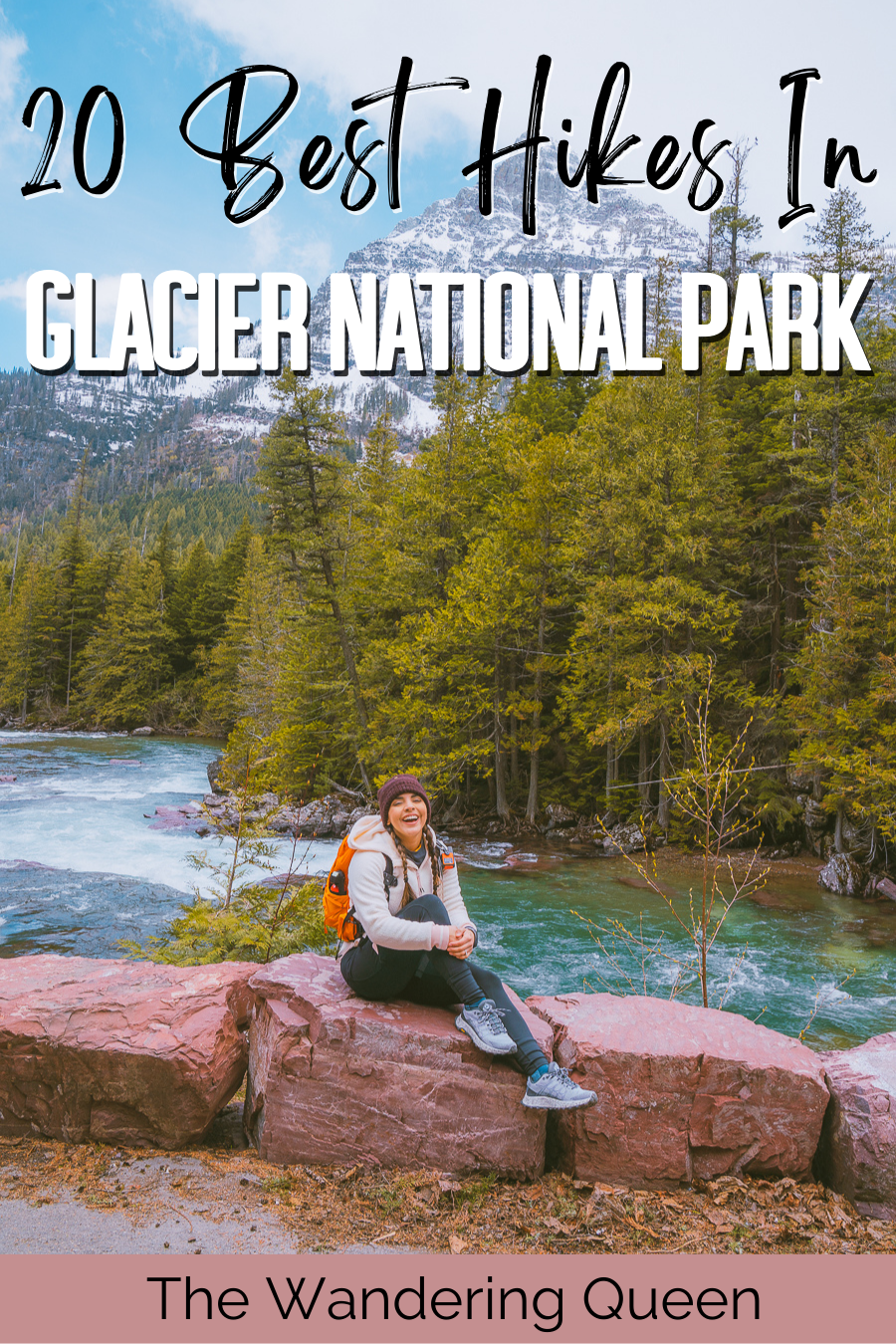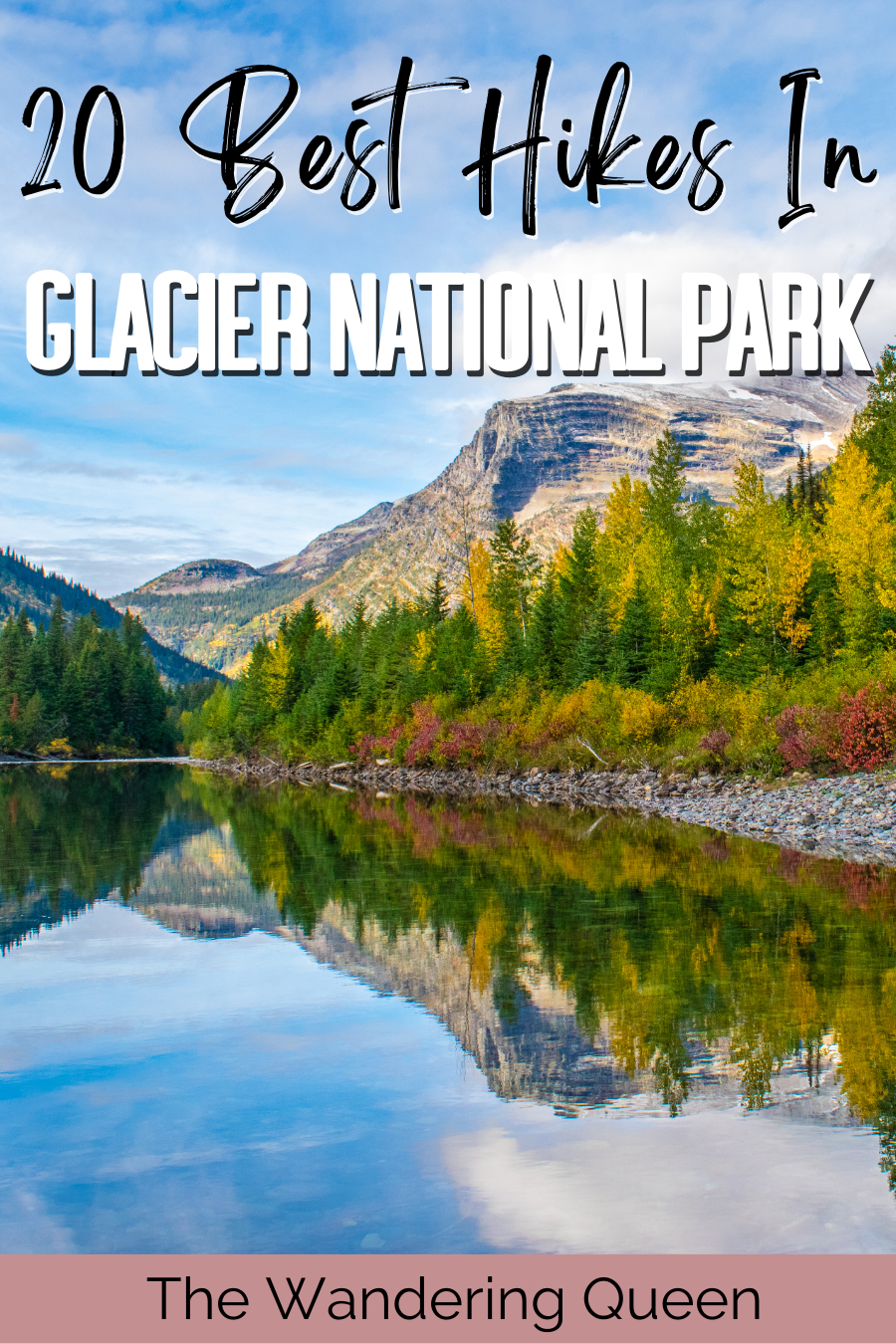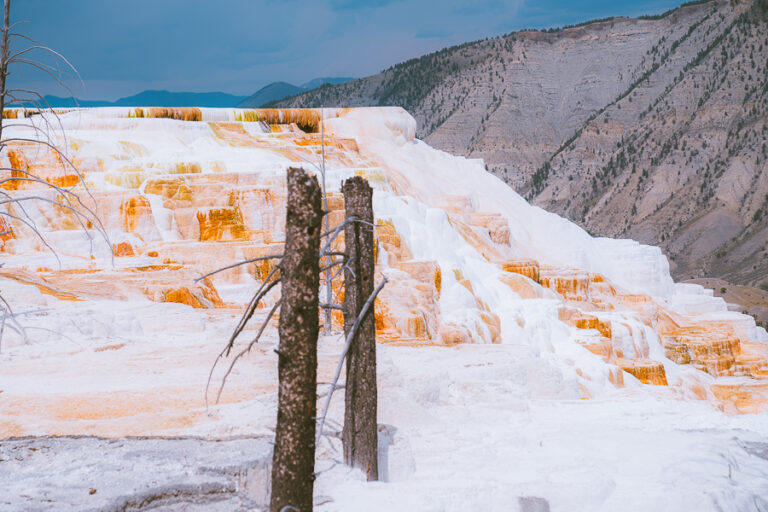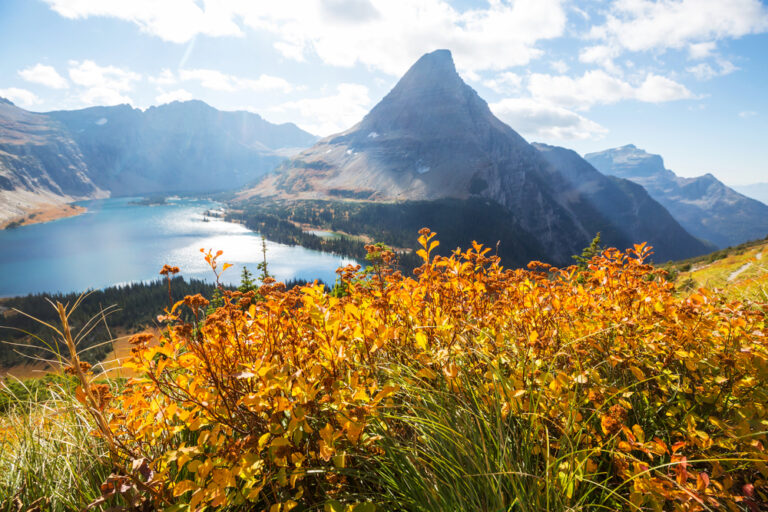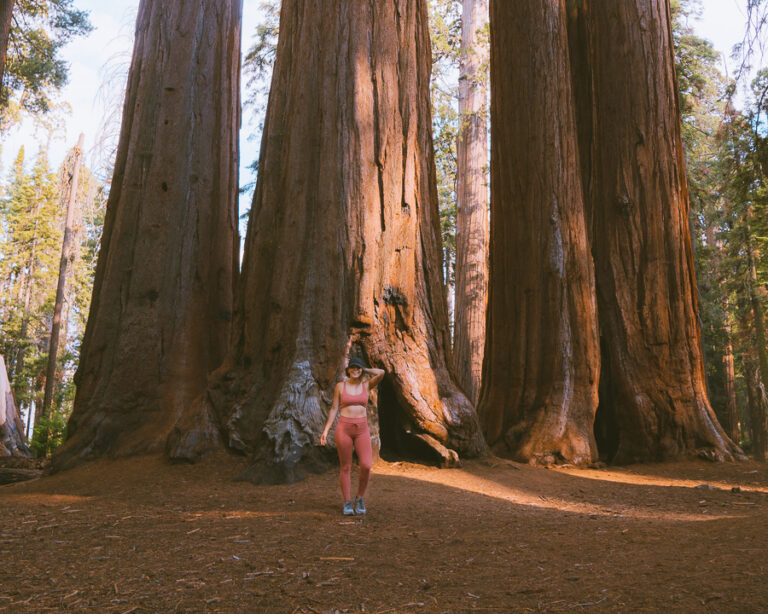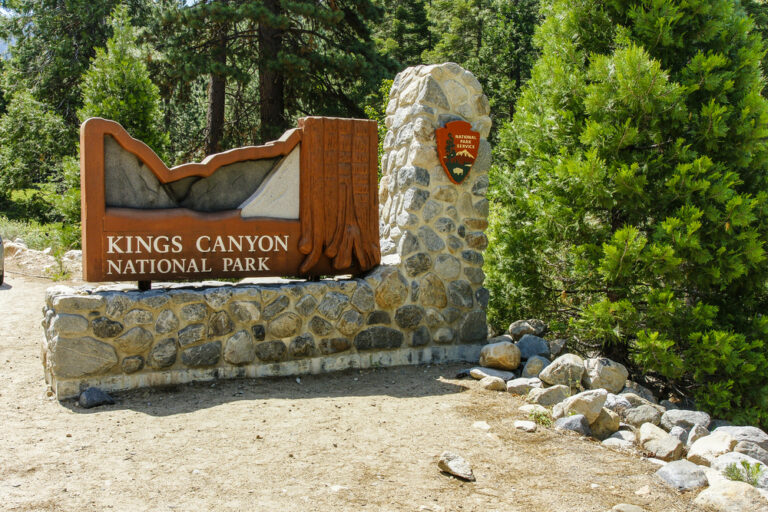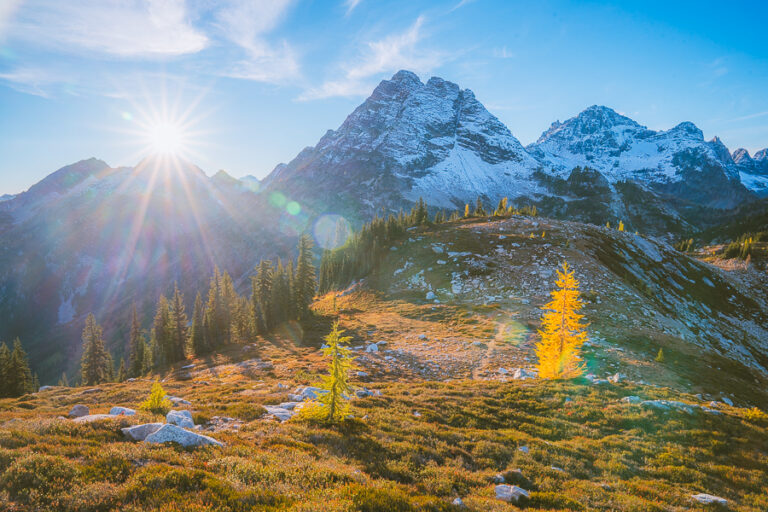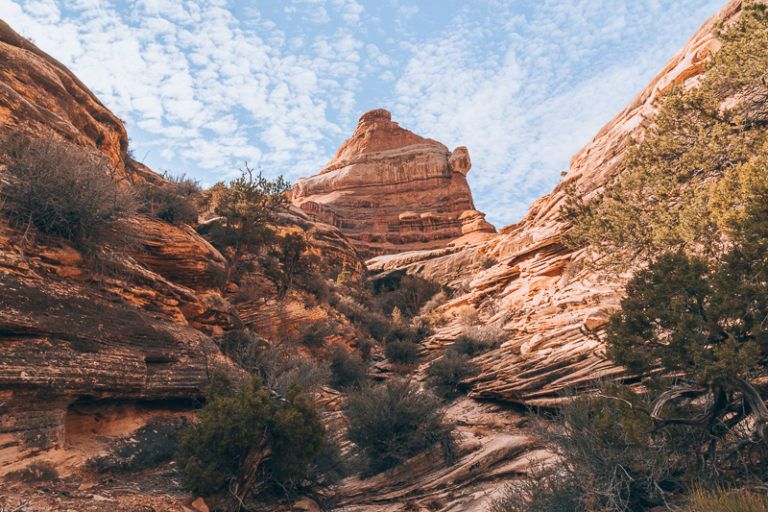20 Best Hikes in Glacier National Park: Trails You’ll Love
Outdoor enthusiasts love a good hiking trail, and Glacier National Park has them in abundance. From the beauty of Avalanche Lake to the glorious vistas of Belly River Valley, you’ll be enthralled by the natural wonders Glacier National Park holds for you.
And that’s not even mentioning Many Glacier Valley or Swiftcurrent Lake!
National park hikes are exhilarating, and Glacier trails are no different. Whether it’s waterfalls or meadows that delight your soul, every hike on your Glacier National Park itinerary will have something to offer you.
Enough chatter. Let’s get on with the reason you came here: to read about the best hikes Glacier National Park has to offer.
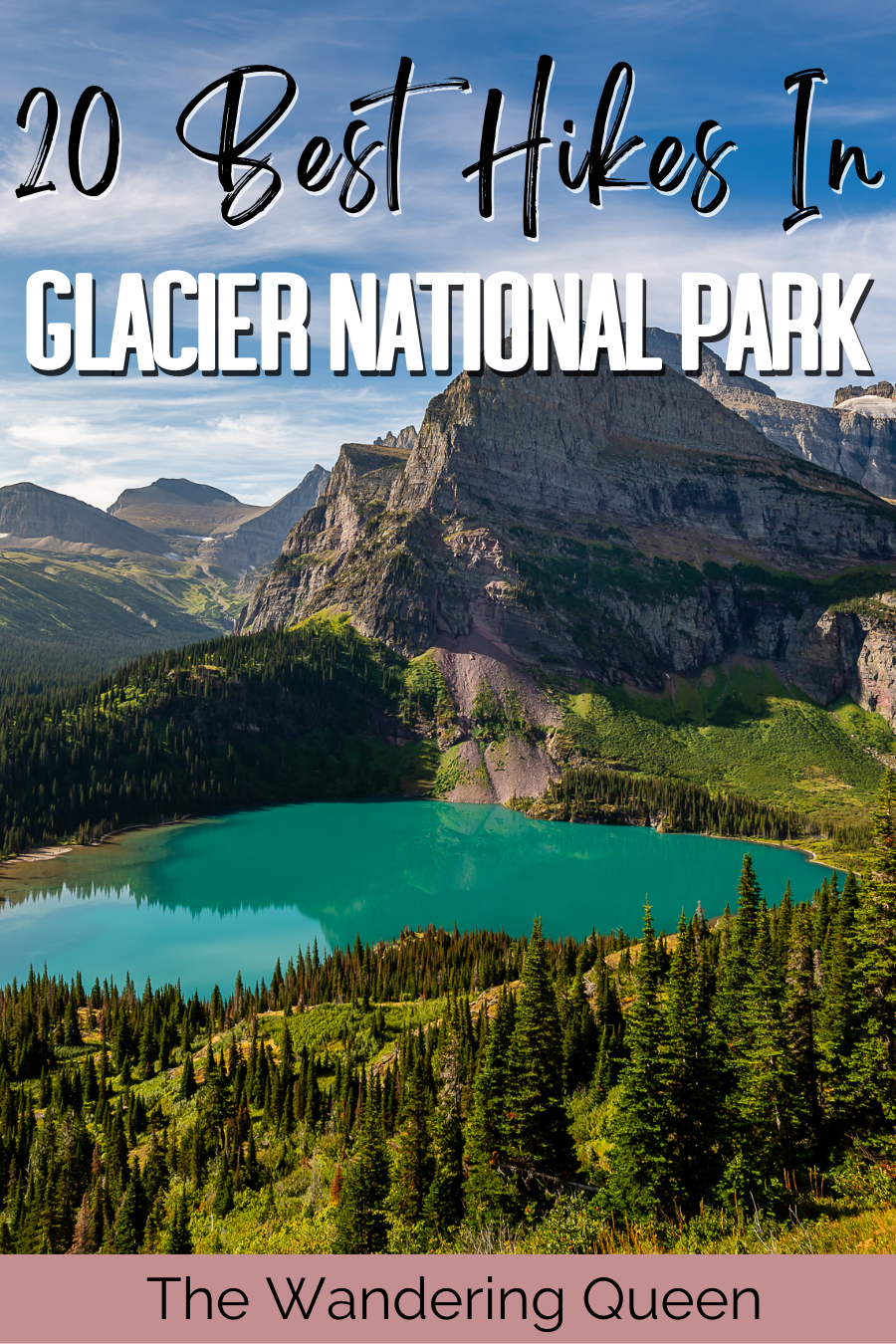
Disclosure: This post contains affiliate links. If you click one of them, I may receive a small commission (for which I am very grateful for) at no extra cost to you.
Glacier National Park
Related Posts
Where to Stay at Glacier National Park
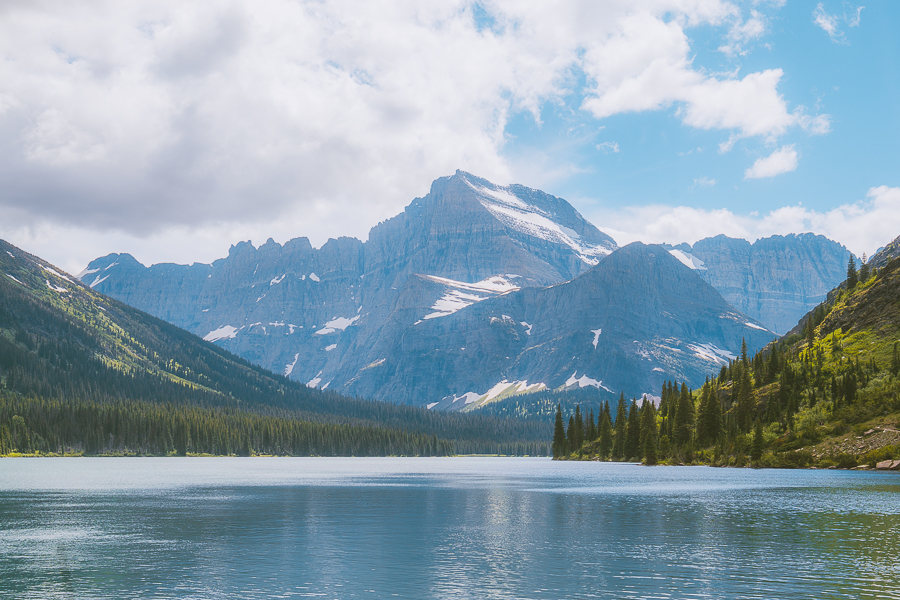
Whether it’s a 4-star lodge or a camping bed, you’ll need a place to rest your head after a long day of hiking and enjoying the natural beauty of Glacier.
Best Western Rocky Mountain Lodge (Budget)
Rustic, homely decor with a modern twist dominates the Best Western Rocky Mountain Lodge. It’s classy and comfortable, located only 26 miles from Glacier National Park.
The rooms are spacious and the Wi-Fi is free, and you can enjoy the hot tub, outdoor pool, and on-site fitness center at your leisure. A full continental breakfast will await you each morning. And what’s more, the hotel is pet-friendly. >>>Check Availability
Cedar Creek Lodge & Conference Center (Mid-Range)
With the comforts of a mountain lodge blended seamlessly with a modern style, Cedar Creek Lodge will lull you into a cozy stupor.
Situated at the gateway to Glacier National Park, it’s a convenient location for hikers. Plus, they offer free Wi-Fi and a hot buffet breakfast to prepare you for the treks ahead. An indoor pool and hot tub are also on offer, plus a fitness center. >>>Check Availability
Lodge at Whitefish Lake (Luxury)
Nestled on the shores of Whitefish Lake, this lodge has an award-winning restaurant, full-service spa, and gym for your enjoyment. The property has a marina where you can experience watersports and a coffee bar with grab-and-go options.
Its upscale white-and-wooden decor belies its sultry comforts and views. All rooms have free Wi-Fi and fireplaces for that extra cozy feel. >>>Check Availability
Many Glacier Campground (Budget)
This prime campground on the eastern side of Glacier National Park is comfortably nestled between fir trees and jagged peaks. It’s ideally located close to multiple hiking trails, and the campsite is well equipped — although the campsites are a little too small for big tents and RVs.
You can take a hot shower and do your laundry at the nearby Swiftcurrent Motor Inn. Here are some tips if you’re a camping beginner. >>>Check Availability
Read More: Where to Stay in Glacier National Park | 14 Best Hotels & Lodges
Tours At Glacier National Park
What To Wear When Hiking Glacier National Park
- Sunscreen: Super important, and it is part of the ten essentials! >Buy Sunscreen
- Chapstick: This one has SPF, so your lips won’t get burned! >Check Out This Chapstick
- Hiking Boots/Shoes: If you use tennis shoes, you can easily hurt your toes hitting a rock by accident (Trust me, I have done it so many times before). >Check Out My Hiking Shoes
- Hiking socks: Having the correct socks helps you prevent getting blisters. Smart Wool is probably my favorite brand out there. >Buy Hiking Socks
- Water Reservoir: Water reservoirs help prevent me from getting dehydrated while hiking. The great thing about this reservoir is that it doesn’t have the plastic taste. >Here Is My Water Reservoir
- Water: Stay nice and hydrated.
- Sunglasses: It can get sunny even in the fall, so make sure to pack some sunglasses. >Check Out These Sunglasses
- Snacks: The best snacks are jerky, nuts, and energy bars. Clif Bars are great for hiking
- Camera: The Sony A6000 was one of the first cameras I started traveling with. The Sony A6000 is an excellent camera for people that want to start improving at travel photography. >Buy Sony Camera Here
- First Aid Kit: This is one of the first things I bought when I first started going on adventures. It is super portable. >Buy This Awesome First Aid Kit Here
- Day Pack to carry all your things: To carry all your gear, water, and food, you need a good backpack. Osprey is known to have some of the best backpacks in the market. >Buy This Great Quality Backpack
- Headlamp: A headlamp is an absolute must in case you get stranded in the dark! It is a lot more portable and easier to use than a flashlight. >Buy A Headlamp Now
- Leggings or Hiking Pants: I always wear leggings while hiking because it is what I feel most comfortable with! >Click For My Favorite Hiking Leggings
- Breathable sweat-wicking shirts: Cotton shirts soak up your sweat when hiking, so make sure to wear something breathable. >Check out this awesome breathable shirt here.
- Mid Base Layer: If you are hiking in the Fall or Spring, this might be a great idea. >Check Out My Sweater Here
- Sports Bra: For women. >Check This One Here
- Jacket: I always have a jacket in my backpack, even if it is hot. I do it just in case of an emergency. >Buy My Favorite Jacket
- Rain Jacket: The worst feeling in the world is being wet and cold while hiking. You can get hypothermia, so always carry a poncho or a rain jacket when you hike Montana. >Check Out My Rain Jacket Here
- Tripod: This is an optional item, but it is excellent for getting the ideal sunset pictures. >Check out this tripod
- Knife: I always carry a knife in my backpack, just in case. >Check Out My Knife Here
- National Park Pass: I highly recommend getting a year-long America The Beautiful Pass so you can get into both parks with ease. >Get It Here
- Map And Trail Guide: Start planning your trip with this. >Buy One Here
Claim your FREE Hiking Checklist
Ready to start hiking? Grab my free hiking checklist and never forget anything at home!
Best Hikes In Glacier National Park
Best Glacier National Park Hikes
Are you ready for the ultimate list featuring the best hiking in Glacier National Park? Without further ado, read on to explore these gorgeous options.
Hikes in West Glacier
There are a couple of hiking gems in West Glacier you don’t want to miss out on, and here they are:
McDonald Creek
- Mileage: 5.6 miles
- Elevation Gain: 280 feet
- Time: 2 Hours
- Difficulty: Easy
- Type of Trail: Out-and-back
- Trail Guide: Link
During the off season, when most trails are closed off with snowdrifts, the McDonald Creek Trail that runs near Lake McDonald remains open. You can even blaze a trail over the frozen creek if your inner explorer urges you to venture off the beaten path during a winter visit.
When it’s summer, this idyllic trail offers some respite from the crowds and some pristine peace. It’s a fairly flat and tranquil trek overall, beginning on a flat gravel footpath through a dense forest. Not far from the trailhead you’ll see McDonald Falls, and further on wetland areas will dominate your view. You may even see harlequin ducks in spring.
Trail of the Cedars
- Mileage: 1.4 miles
- Elevation Gain: None
- Time: 30 minutes
- Difficulty: Easy
- Type of Trail: Loop
- Trail Guide: Link
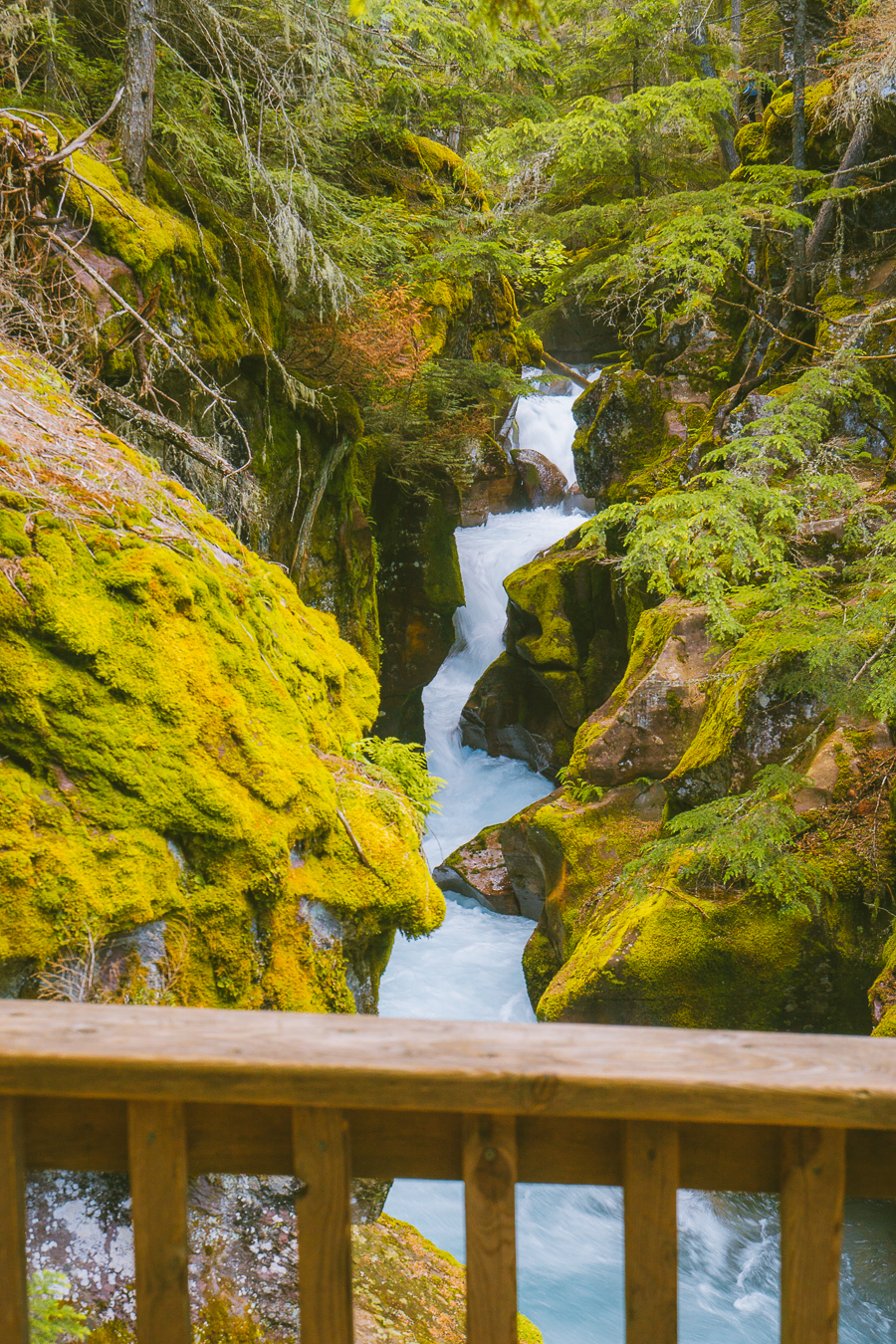
The Trail of Cedars in West Glacier is probably one of the easiest Glacier National Park hikes, what with the elevated wooden boardwalk. It winds its way through a gorgeous grove of ancient western red cedars. There’s even a waterfall at the end of the trail to make it even more worthwhile.
It’s not strenuous at all, so even hikers who’ve just embarked on their hiking lifestyle will be able to enjoy this boardwalk trail with ease. Seasoned hikers might find it a bit too easy, but it is nonetheless worth the quick journey for its beauty. It can get crowded though, as its accessibility and ease makes it a popular trail.
Download my free Outdoor Photography Guide
Apgar Lookout Trail
- Mileage: 7.1 miles
- Elevation Gain: 1845 feet
- Time: 4 Hours
- Difficulty: Hard
- Type of Trail: Out-and-back
- Trail Guide: Link
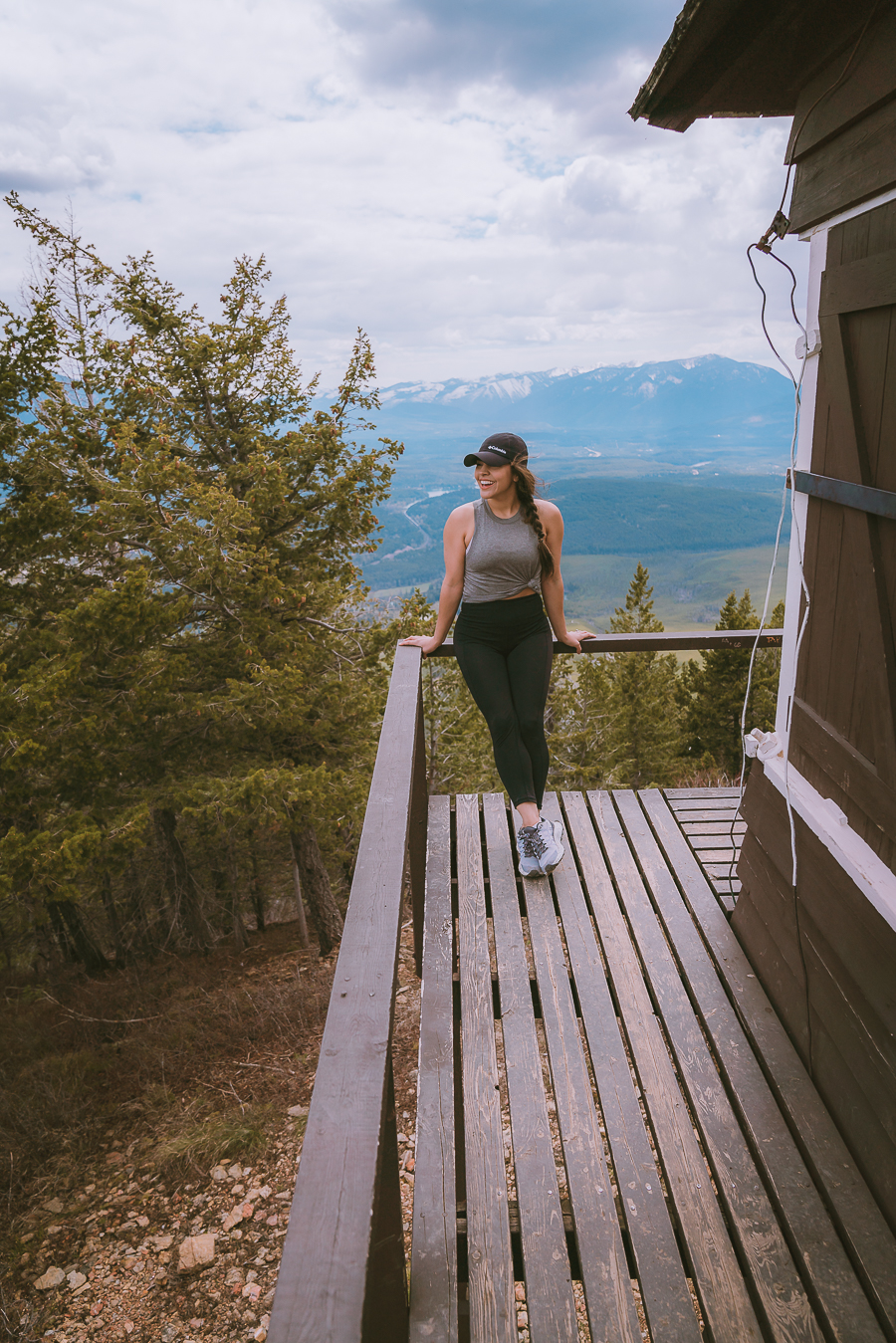
One of the most notable features of the Apgar Lookout Trail is a section of dead trees leftover from the Robert Fire of 2003. It creates an eerie yet beautiful picture near the West Entrance. Less than a mile after the trail starts, you’ll begin a steady climb up the mountain slopes, rising 1,700 feet in just 2.7 miles.
From Apgar Lookout, you’ll have stunning views of Lake McDonald, and the high peaks in the heart of Glacier. It’s one of the first trails to be snow-free in the park, so it’s a perfect early-season hike. This hike is one of the few that’s best done in the afternoon so the sun won’t be in your eyes, but it might be a bit hotter.
Read More: 10 Awesome Things To Do In Glacier National Park
Avalanche Lake
- Mileage: 4.6 miles
- Elevation Gain: 500 feet
- Time: 2.5 Hours
- Difficulty: Moderate
- Type of Trail: Out-and-back
- Trail Guide: Link
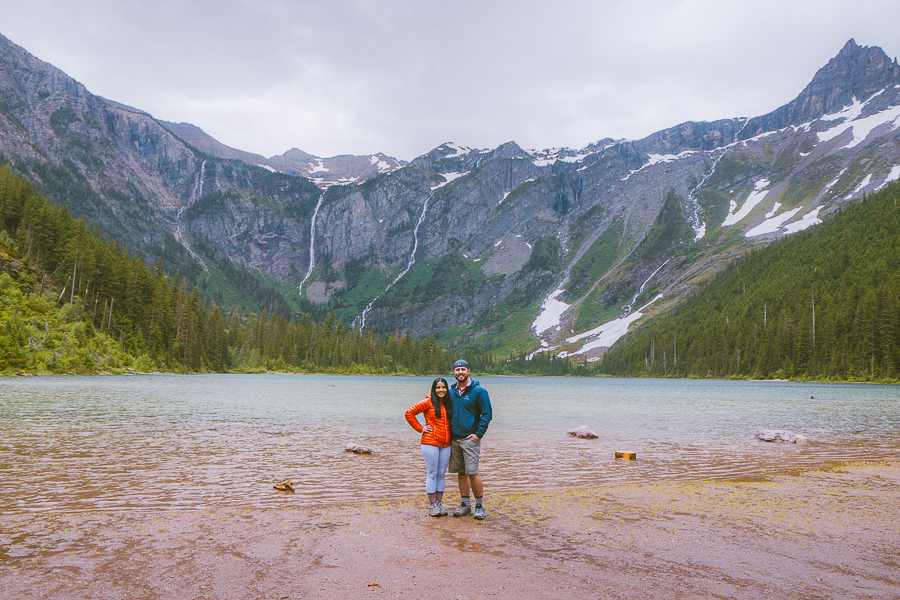
The Avalanche Lake hike distance isn’t too strenuous, at less than five miles with a low elevation gain. The first bit of the trail follows the Trail of the Cedars, and once you reach Avalanche Creek trail, the crowds will taper off.
You’ll continue through a forest to reach Avalanche Lake. Some of the oldest growth in Glacier National Park is found here, thanks to a lack of any recent forest fires. Once you reach Avalanche Lake, you’ll be mesmerized by the giant mountains that seem to leer over the emerald waters and red rocks of the lake.
If you have some energy left, head for the other side of Avalanche Lake for a different perspective.
Johns Lake Loop
- Mileage: 1.8 miles
- Elevation Gain: 225 feet
- Time: 1 hour
- Difficulty: Easy
- Type of Trail: Loop
- Trail Guide: Link
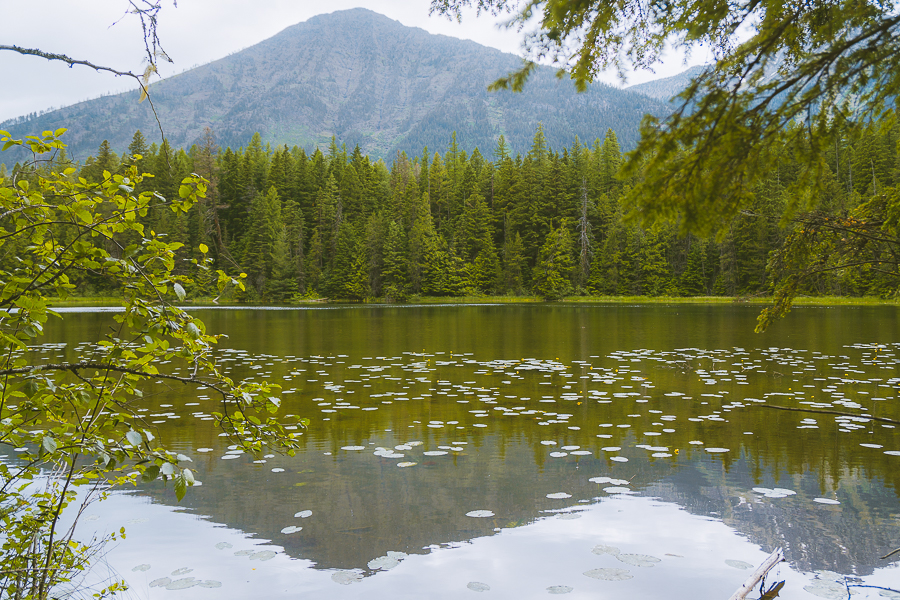
The Johns Lake Loop begins delicately as the trail passes through an old forest of hemlocks and red cedars. Soon you’ll start to catch glimpses of Johns Lake, which is surrounded by dense forest. But the water has pretty water lilies and grasses to make it that much more charming.
As you continue, you’ll see beautiful scenery including a footbridge over a charming river cascade and the stunning McDonald Falls as it empties into McDonald Creek. There’s another lovely viewpoint further along the trail where the creek empties into McDonald Lake which makes for a lovely photo opportunity.
Download my free Outdoor Photography Guide
Hikes Along Going-to-the-Sun Road
Plenty of hikes begin and end along Going-to-the-Sun Road. You can even bike along this road like I did.
Highline Trail
- Mileage: 11.8 miles
- Elevation Gain: 2,000 feet
- Time: 8 hours
- Difficulty: Hard
- Type of Trail: One way
- Trail Guide: Link
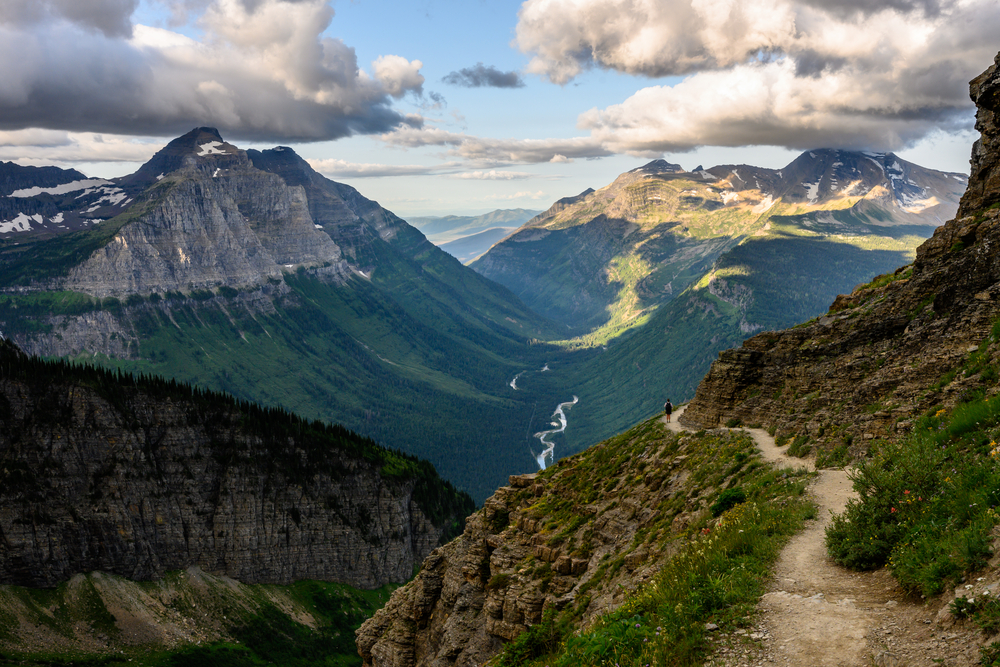
Highline Trail could possibly be the best hike in Glacier National Park thanks to its breathtaking vistas that offer a little bit of everything the park has to boast about. The Highline Trail distance is substantial, but nothing a seasoned hiker would complain about.
Beginning from the trailhead near Logan Pass Visitor Center, you’ll navigate a rocky cliffside with steep inclines and drop-offs before encountering a grassy terrain. Mountain goats and marmots may be around, so keep your eyes peeled.
This high elevation offers some spectacular panoramas, especially early in the day with the sunrise hitting the peaks at just the right angles. The Highline Trail is a one-way hike, so you’ll have to organize transport or hop on the free park shuttle to get back to your starting point.
Grinnell Glacier Overlook (The Garden Wall)
- Mileage: 1.8 miles
- Elevation Gain: 900 feet
- Time: 1 hour
- Difficulty: Hard
- Type of Trail: Out-and-back
This short hike to Grinnell Glacier Overlook is also referred to as The Garden Wall and is basically a side-trip from the Highline Trail. It might be short, but it’s no joke. The straight-uphill, superbly-strenuous 1-mile trek may leave you breathless in more ways than one. You’ll probably end up rethinking your life choices on more than one occasion.
However, no matter how grueling the hike up may be, seeing Grinnell Glacier Lake from above makes you feel as though you’re on top of the world looking down. On a sunny day, the striking colors are even more stunning, and you’ll forget about the ache in your thighs pretty quickly. At least the return from Grinnell Glacier Overlook is all downhill.
Grab Your Free Car Camping Checklist! 🚗🌲
Ready to elevate your car camping game? Snag our essential checklist to ensure you’ve got everything you need for a stress-free, fun-filled adventure! Perfect for beginners and seasoned campers alike. Download now and hit the road prepared! 🌟🎒
Baring Falls
- Mileage: 0.7 miles
- Elevation Gain: 108 feet
- Time: 30 minutes
- Difficulty: Easy
- Type of Trail: Out-and-back
- Trail Guide: Link
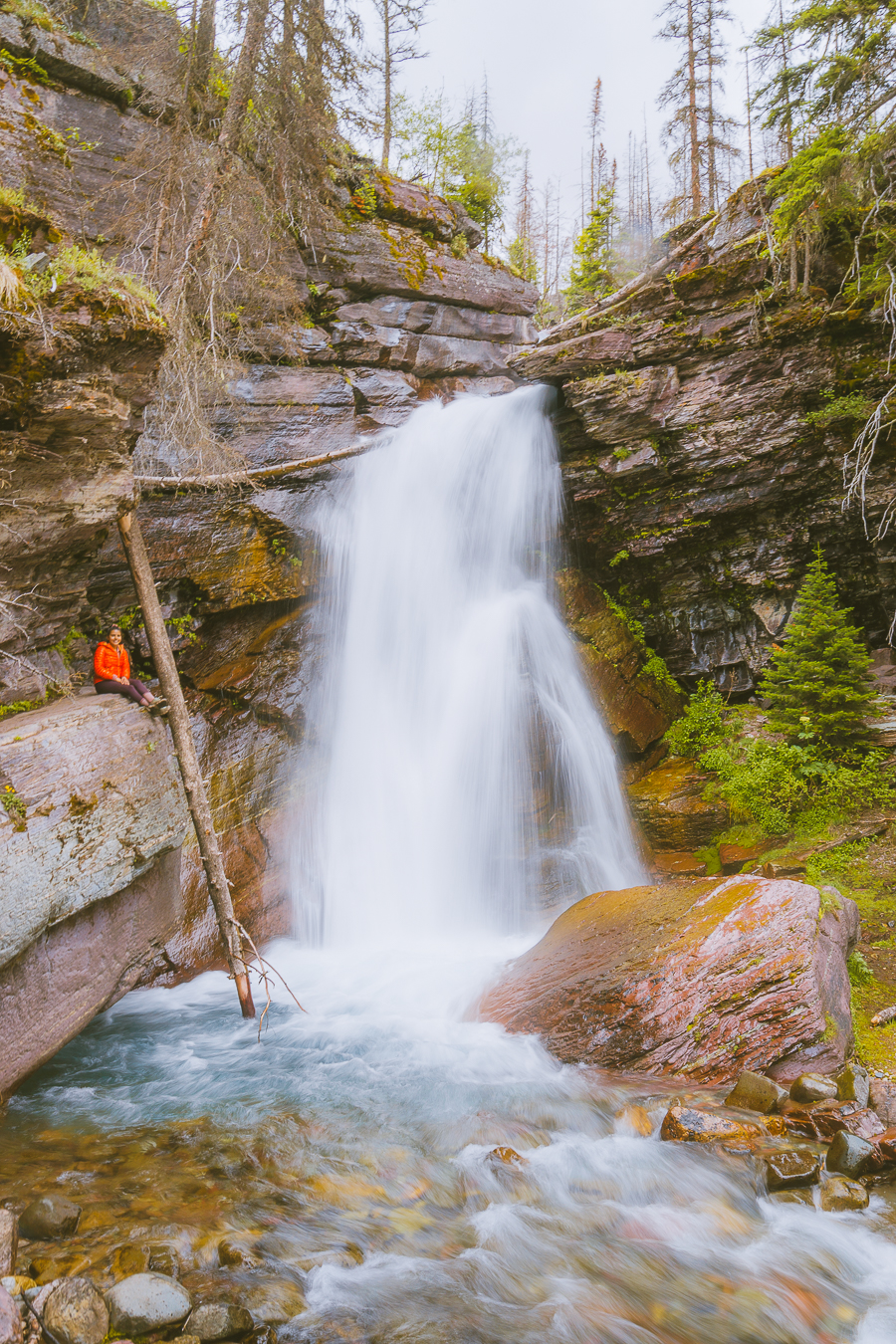
Baring Falls trail is one of those Glacier National Park hiking trails that is both accessible and pretty, so what’s not to love? It’s a cozy little gem that most people aren’t even aware of, meaning it’s seldom crowded. It’s quite close to the St Mary and Virginia Falls trailhead, which often steal the limelight, but that doesn’t make Baring any less worth your time.
The waterfall cascades 25 feet over a rock ledge and continues flowing along Baring Creek into St. Mary Lake. It’s a prime spot for a pleasant respite and to spot some birds like American dippers.
Hidden Lake Overlook
- Mileage: 2.8 miles
- Elevation Gain: 460 feet
- Time: 1 hour
- Difficulty: Moderate
- Type of Trail: Out-and-back
- Trail Guide: Link
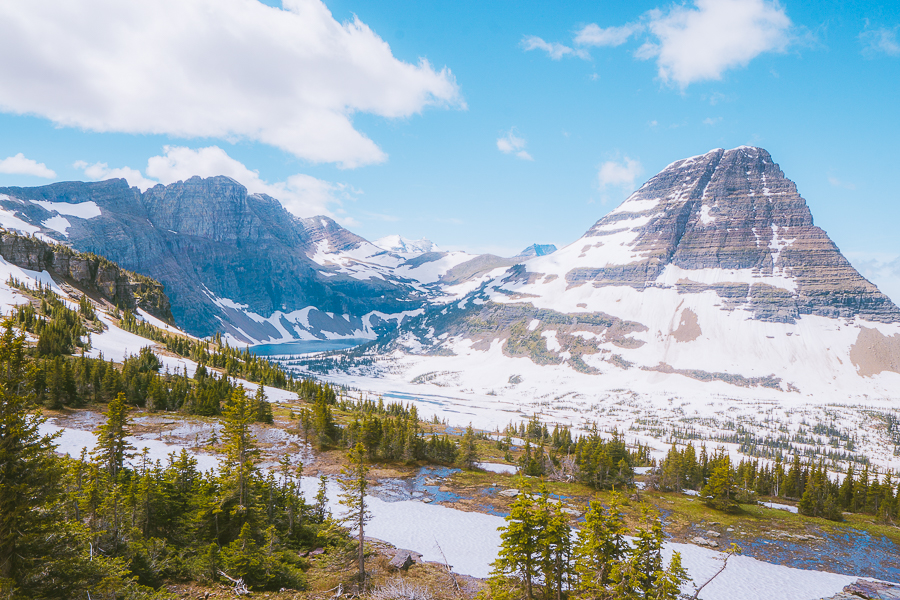
The Hidden Lake trail is one of the more popular treks. Thanks to the gorgeous views of Clements Mountain from this route, it’s easily one of the best hiking trails in Glacier National Park.
You’ll pass through grassy meadows, starting along a paved path by the Logan Pass Visitor Center, which changes to a boardwalk and finally, a dirt trail. Keep an eye out for mountain goats, marmots, and bighorn sheep in the meadows.
The scenic mountain vistas from the Hidden Lake Overlook trail are postcard-perfect, so keep your best camera gear handy. It’s one of the more popular trails, so start early to avoid crowds.
Siyeh Pass
- Mileage: 10.1 miles
- Elevation Gain: 2,234 feet
- Time: 6 hours
- Difficulty: Hard
- Type of Trail: One way
- Trail Guide: Link
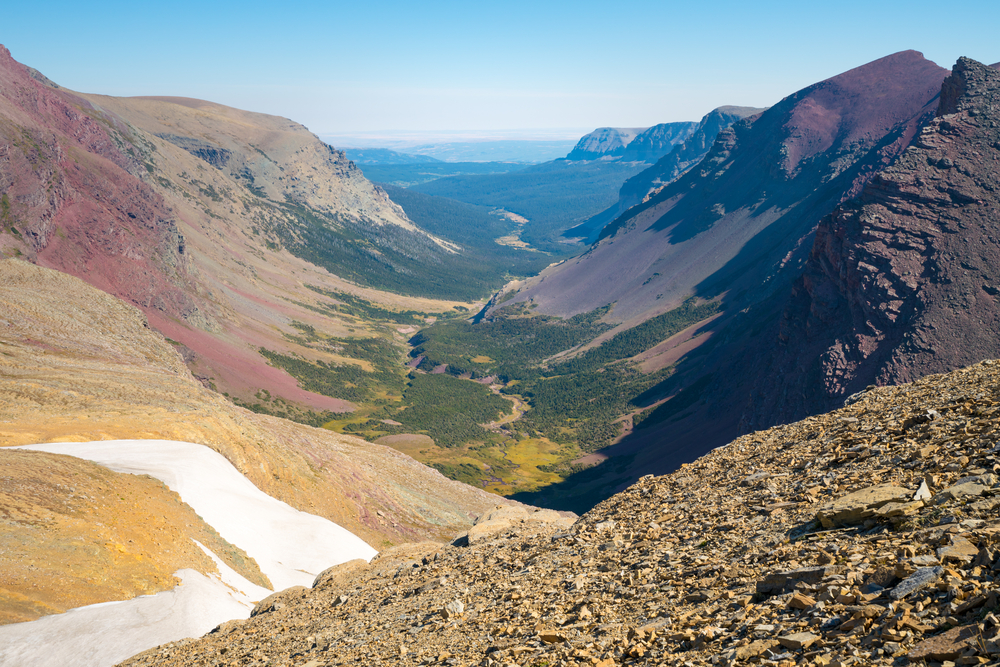
Siyeh Pass begins and ends along Going-to-the-Sun Road, one point at Piegan Pass and the other at Sunrift Gorge. Expect impeccable snow-kissed mountain views from delightful alpine meadows along this route. It makes for a great alternative to the Highline Trail if you want to avoid crowds.
You’ll have fantastic vantage points of Mt Siyeh, Piegan Mountain, and Pollock Mountain, not to mention Matahpi Peak. The meadow climb is the steep part, but you’re rewarded with views of Sexton Glacier and the Baring and Boulder Creek Valleys.
Similar to the Highline Trail, you’ll need to use the free park shuttle or park cars at both ends as this is a one-way hike.
St. Mary Falls and Virginia Falls
- Mileage: 3.6 miles
- Elevation Gain: 285 feet
- Time: 1.5 hours
- Difficulty: Easy
- Type of Trail: Out-and-back
- Trail Guide: Link
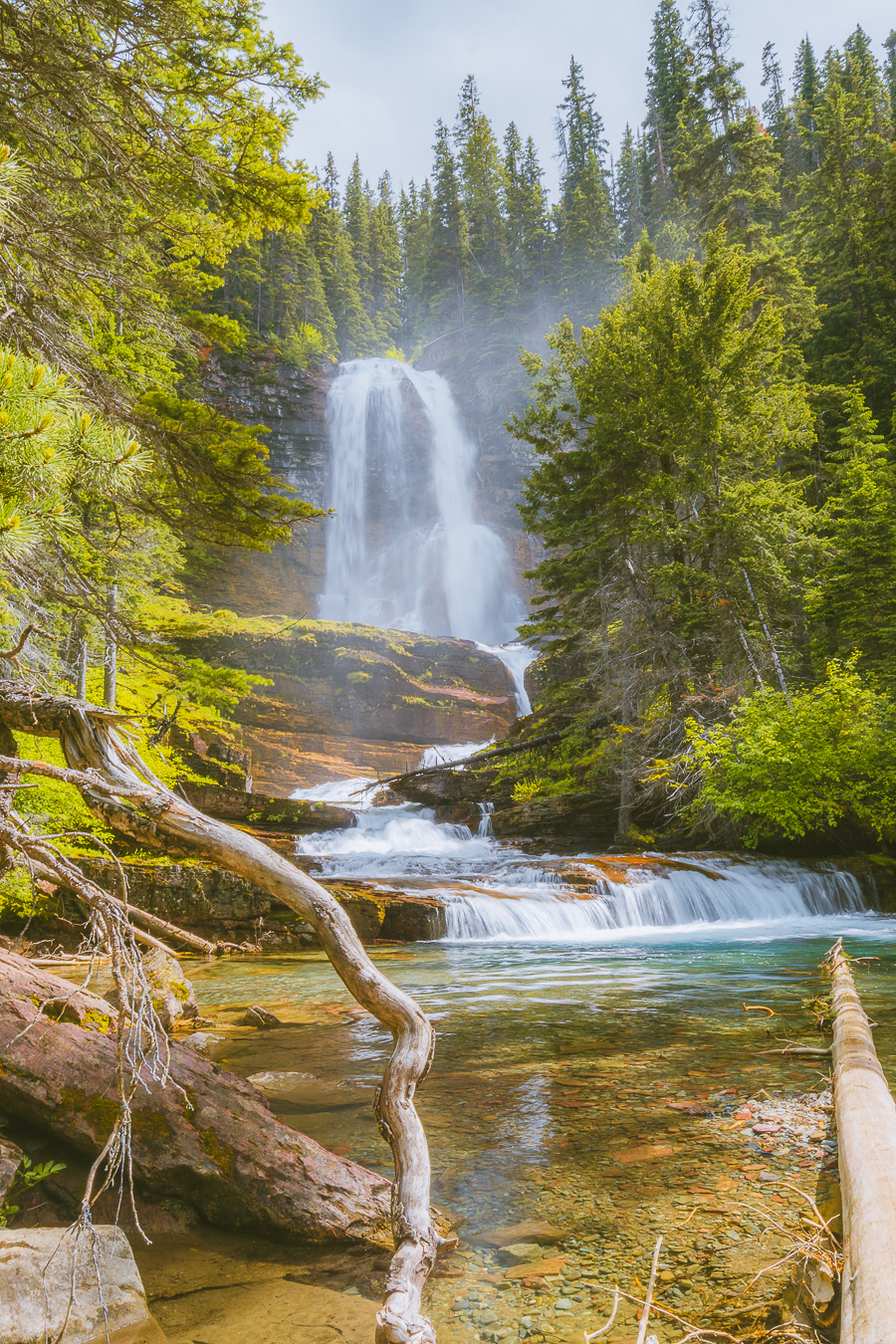
The St. Mary Falls trail and Virginia Falls trail melt into one, and it will take you to two popular waterfalls in Glacier National Park. The trail can be a little steep down to the lake, but it’s a charming place to spot feeding deer and other wildlife. St Mary falls drops about 35 feet from top to bottom along three tiers
One of the other biggest draws for hikers is that you can swim in the lake that St. Mary Falls plunges into. The water might be chilly, but hey, it’s a good way to cool down and wash away the sweat you worked up hiking there in the first place. There are even rocks you can climb and jump from into the lake below, if you fancy making a splash.
Another 0.8 miles uphill, you’ll find Virginia Falls. It’s tall; it’s impressive; it’s the most postcard-pretty picturesque waterfall you could hope to see outside of a fairytale. Thanks to the abundance of water, Virginia Falls is a popular trail for birding. So bring your binoculars and be lulled by birdsong in this wild wonderland, and look out for American Dippers.
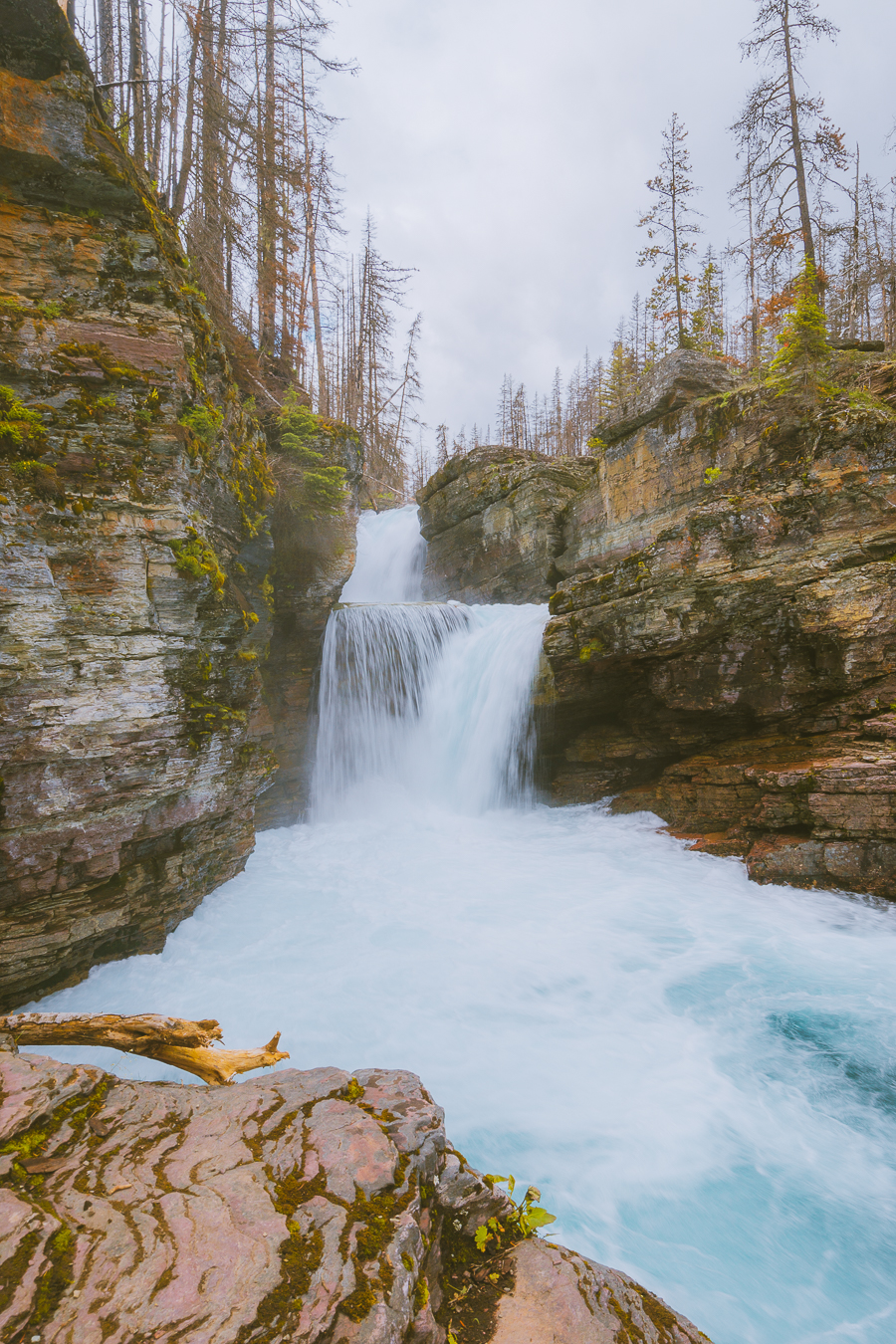
You can reach the St. Mary Falls trailhead easily thanks to the Glacier National Park Shuttle.
Hikes in Many Glacier
Home to some of the trailheads of the best hikes in Glacier, Many Glacier is a fantastic area to start if you haven’t already decided which trail to blaze.
Swiftcurrent Pass
- Mileage: 13.7 miles
- Elevation Gain: 2,467 feet
- Time: 9 hours
- Difficulty: Hard
- Type of Trail: Out-and-back
- Trail Guide: Link
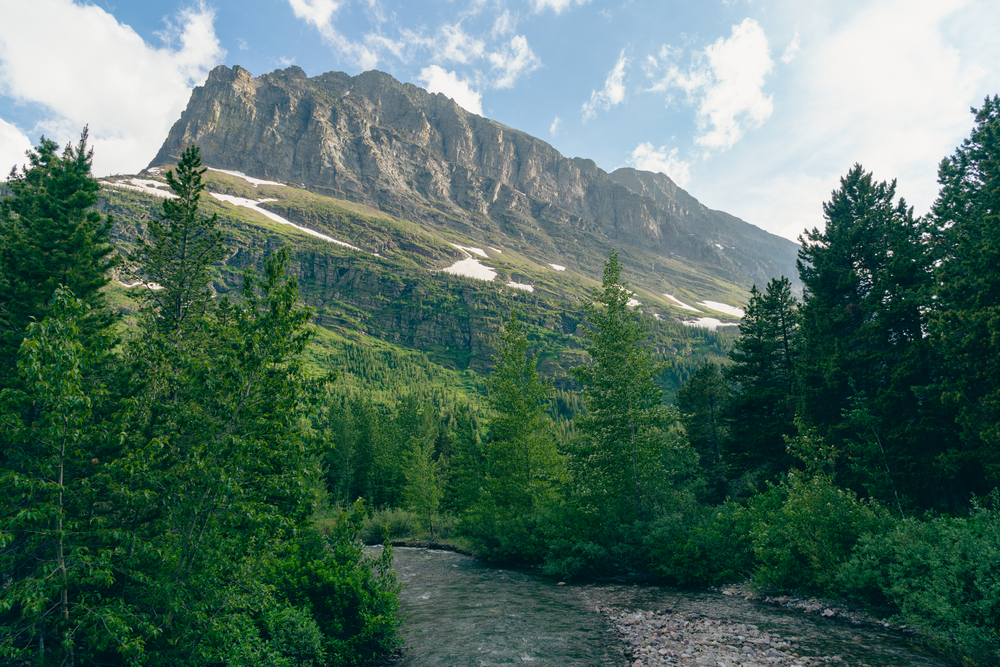
There’s no glossing over the fact that Swiftcurrent Pass is a challenge. It is, however, incredibly rewarding, too. The trailhead is located near Swiftcurrent Motor Inn and follows the same path as Redrock Falls.
At first, you’ll be walking beneath a canopy of forest. Then, after you hit the upper waterfall at Redrock, the trail ascends by thousands of feet, giving you an ache in your calves and amazing views of Glacier that only a high elevation can offer. Almost all the lakes will be laid beneath you, with Swiftcurrent Glacier behind you.
Once you reach the summit, a short side trail will take you to Swiftcurrent Fire Lookout, if you fancy seeing everything this hike has to offer.
Apikuni Falls
- Mileage: 2 miles
- Elevation Gain: 700 feet
- Time: 1 hour
- Difficulty: Moderate
- Type of Trail: Out-and-back
- Trail Guide: Link
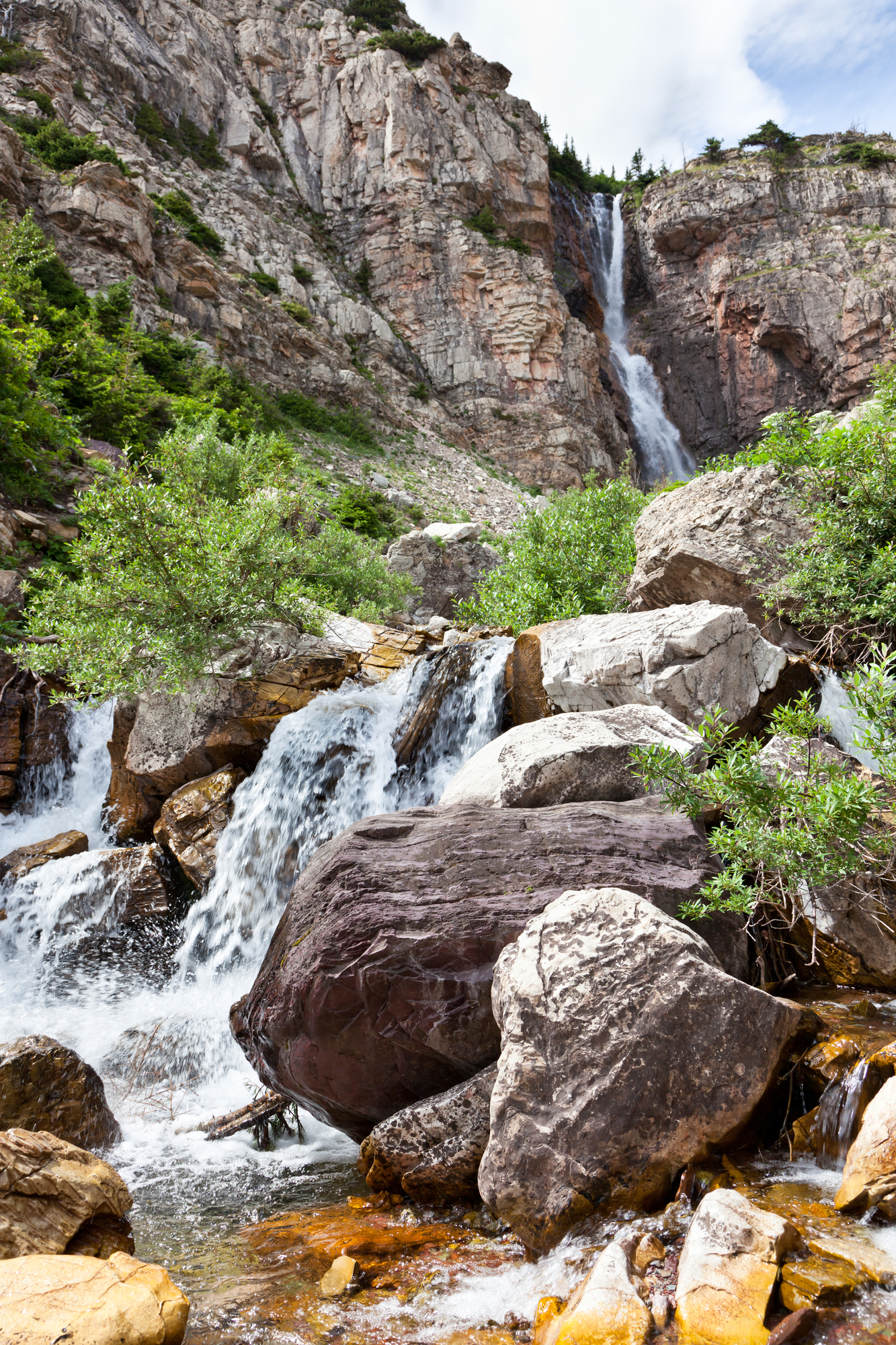
If you love waterfalls, this is one of the day hikes in Glacier National Park you should try out. You’ll start out near a young aspen grove, just beyond which you’ll begin a steep ascent through pine forest — 500 feet in less than half a mile, to be precise. But you’ll have some great views of Cracker Flats below.
Soon after the trail levels out you’ll begin to hear the roar of the 100-foot waterfall, and just a little further, you’ll see it in all its glory cascading down two tiers. You can continue climbing downhill to the base of the falls from here fairly easily and enjoy the view before making your way back.
Cracker Lake
- Mileage: 12.8 miles
- Elevation Gain: 1,400 feet
- Time: 6 hours
- Difficulty: Moderate
- Type of Trail: Out-and-back
- Trail Guide: Link
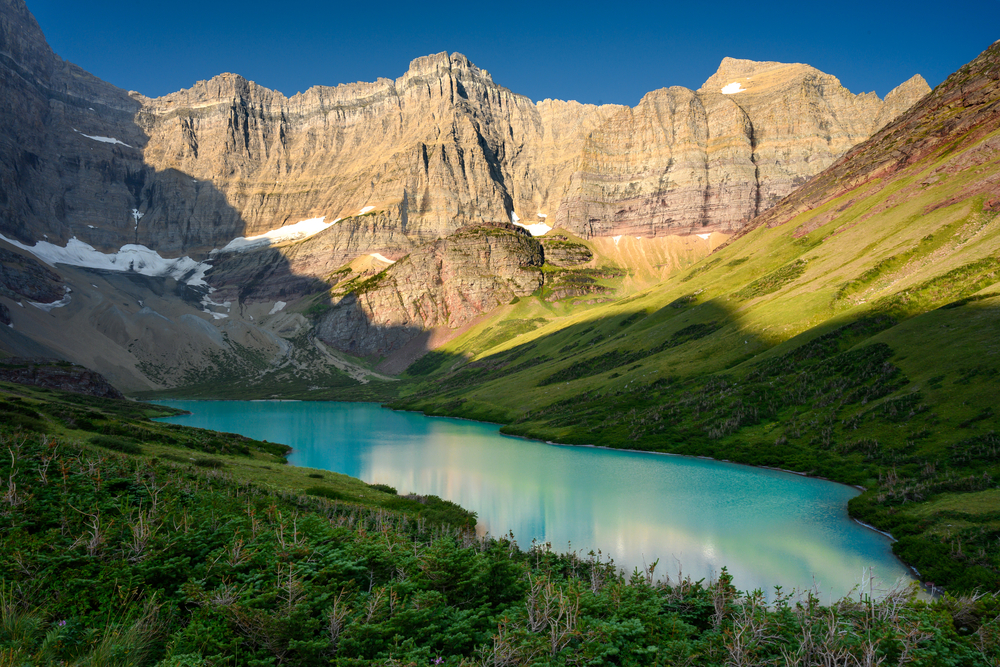
Alpine meadows, an ethereal aquamarine lake that almost glows from within, and steep mountains with dustings of snow — it’s like a little piece of Switzerland. It may be beautiful, but this hike can be a bit of a challenging one with switchbacks aplenty and a steady elevation gain that might make your knees buckle.
The trail is consistently uphill, but the incline isn’t very steep, and you’ll also be passing through the Cracker Flats area, which is a piece of scenic heaven. But bring your bug spray, because they’ll descend without mercy.
The lake itself gets its color from glacial water and is the bluest in the park, making this one of the best hiking trails Glacier National Park has to offer if only for the views. The trail is all downhill on the way back, making it a bit easier on the legs.
It’s one of the less frequented trails, so you won’t find it too crowded. Just keep that can of bear spray handy, as this trail is also known for its bear sightings.
Redrock Falls
- Mileage: 3.6 miles
- Elevation Gain: 100 feet
- Time: 1.5 hours
- Difficulty: Easy
- Type of Trail: Out-and-back
- Trail Guide: Link
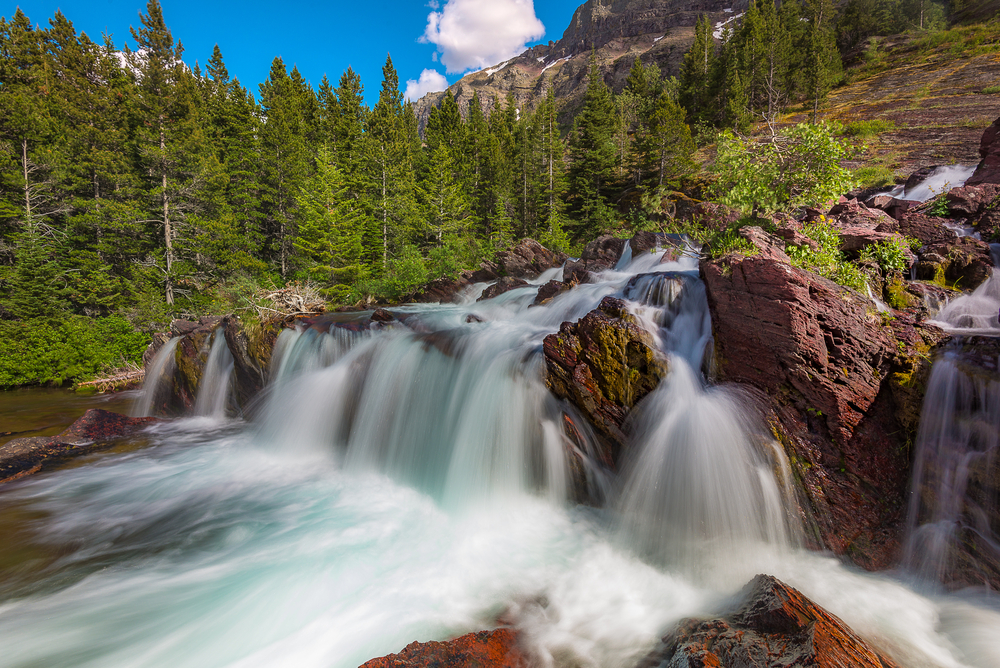
Stop by Fishercap Lake about one-third of a mile into the hike for some stunning mountain views surrounding this picturesque lake — you may even spot a moose! Continue on your trek passing through aspen groves and open areas of huckleberries and mountain views before reaching Redrock lake. From here, you can see Mount Grinnell and Swiftcurrent Mountain.
Once you pass the red rock formations along the western shore of Redrock Lake, go left at the fork in the trail to reach the lower Redrock Falls. They’re some of the most impressive falls along the Glacier National Park trails, and there are several short side trails you can climb for different vantage points to admire Redrock Falls in all its beauty.
Grinnell Glacier Viewpoint
- Mileage: 10.6 miles
- Elevation Gain: 1,600 feet
- Time: 5.5 hours
- Difficulty: Hard
- Type of Trail: Out-and-back
- Trail Guide: Link
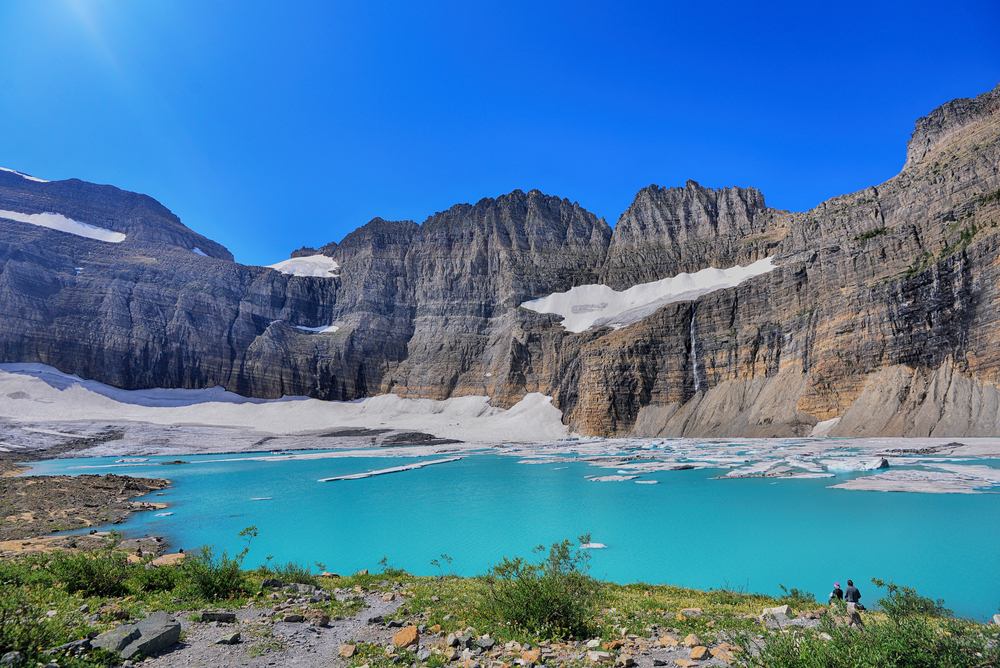
Ready for a bucket list hike recommendation? The viewpoint at the top of this trail is heavenly on another level. The Grinnell Glacier hike begins by the Many Glacier Hotel, and you’ll pass three lakes on the way up.
The elevation gain begins right from the start. But after you pass the initial Lake Josephine and Swiftcurrent Lake and begin to reach Grinnell Lake, the best scenery makes its appearance. Waterfalls, meadows of wildflowers, a few switchbacks, and turquoise waters will grace your vision, as well as some savage mosquitos (seriously, bring the bug spray).
Once you finish your uphill trek, you’ll reach the Grinnell Glacier viewpoint, where once a massive ice flow basked beneath a frosty sun. It’s greatly reduced, but you can enjoy what’s left of the once majestic glacier.
Seeing this river of ice creeping incrementally into the pale cloudy lake below with dramatic cliffs on either side is a once-in-a-lifetime experience. Not only will it make an impact on your Instagram, but it’ll also become a standout memory you’ll treasure forever.

Tip: If you want to shave some distance off of your hike, you can take a boat that’ll drop you on the other side of Lake Josephine, making the trail 3.5 miles shorter.
Iceberg Lake
- Mileage: 9.3 miles
- Elevation Gain: 1,200 feet
- Time: 5 hours
- Difficulty: Hard
- Type of Trail: Out-and-back
- Trail Guide: Link
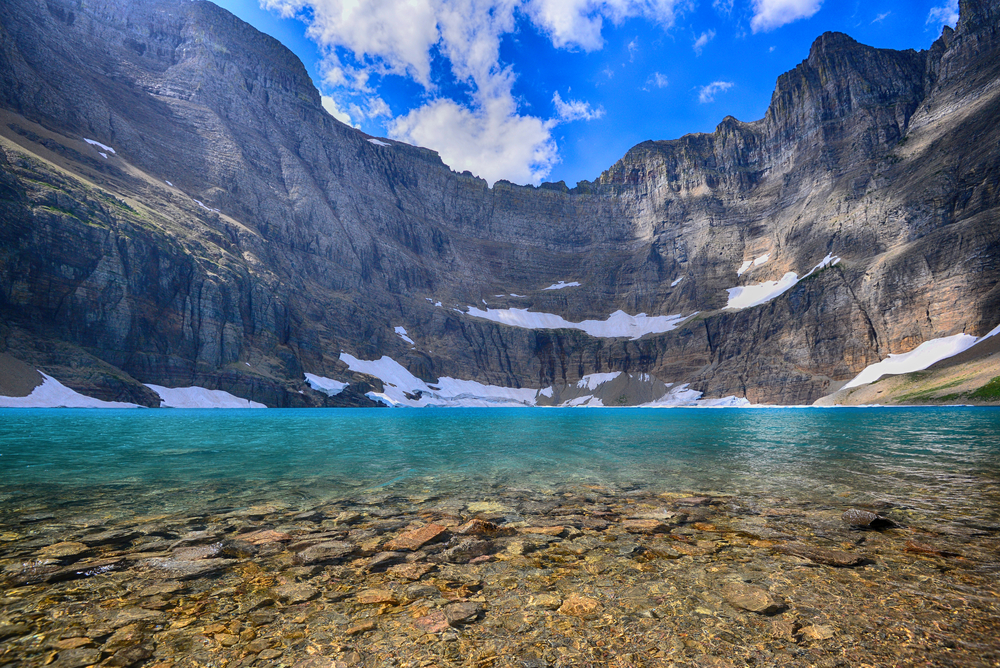
The Iceberg Lake Trail is one of the top hikes in Glacier National Park, thanks to the glorious lake you’ll reach at the end, but let’s start at the beginning. The incline on the Iceberg Lake trail is steep — no sugar-coating here. It begins at the Iceberg Ptarmigan Trailhead and shares the first 2.7 miles of its trail with the Ptarmigan Tunnel Trail.
This first section has a high incidence of bear sightings, especially in September, and they’re often grizzly bears, so carry bear spray on you for safety. On rare occasions, bear activity may even close this trail, so checking trail status before you head out is ideal.
After you divert at the split to Iceberg Lake, you’ll continue your hike until reaching the crystal-clear namesake of this trail. This alpine lake is a curious mix of turquoise and emerald, as are most glacier-fed waters. But what makes it special is that, even in the height of summer, the waters stay cold enough for icebergs to bob about before a background of craggy rocks.
It makes quite the sight, so bring a snack and soak up the views of this unique lake within the bounds of Glacier National Park.
Ptarmigan Lake and Tunnel
- Mileage: 10.6 miles
- Elevation Gain: 2,300 feet
- Time: 6 hours
- Difficulty: Hard
- Type of Trail: Out-and-back
The Ptarmigan Lake Trail begins with alpine meadows interlaced with forests. This is primarily where you’ll see evidence of bear activity, and perhaps even one or two of the mighty beasts themselves (keep some bear spray handy).
After about 2.5 miles, you’ll reach a clearing that overlooks Ptarmigan Falls, the perfect pitstop for a snack and toilet break. From here, the trail winds alongside the creek, meandering toward its final destination.
After 3 miles, the spruce-fir forest becomes less dense, so you’ll be able to see Ptarmigan Wall towering 1,500 feet above in all of its splendor. Bright wildflowers throw pops of color along the trail here, so it’s a hard call whether you should be looking up or down.
Finally, you’ll see the turquoise Ptarmigan Lake with mountain goats and bighorn sheep roaming the slopes around it.
The final climb to reach Ptarmigan Tunnel is daunting — in two-thirds of a mile you’ll ascend 500 feet. But once you make it, all that’s left is for you to go through the tunnel to reach your prize.
It took three months and two jackhammers (not to mention a couple of ten-hole rounds of dynamite) to create the tunnel in 1930. Now it offers a convenient shortcut and a unique vista of the Belly River Valley and Lake Elizabeth as you emerge. Once you’ve enjoyed the views, turn around and make your way back to the start of the trail.
Hikes in Two Medicine
From Two Medicine Lake to other natural wonders, this area of the park is home to some of the best hikes in Glacier.
Pitamakan-Dawson Loop
- Mileage: 17.2 miles
- Elevation Gain: 3,641 feet
- Time: 9.5 hours
- Difficulty: Hard
- Type of Trail: Loop
- Trail Guide: Link
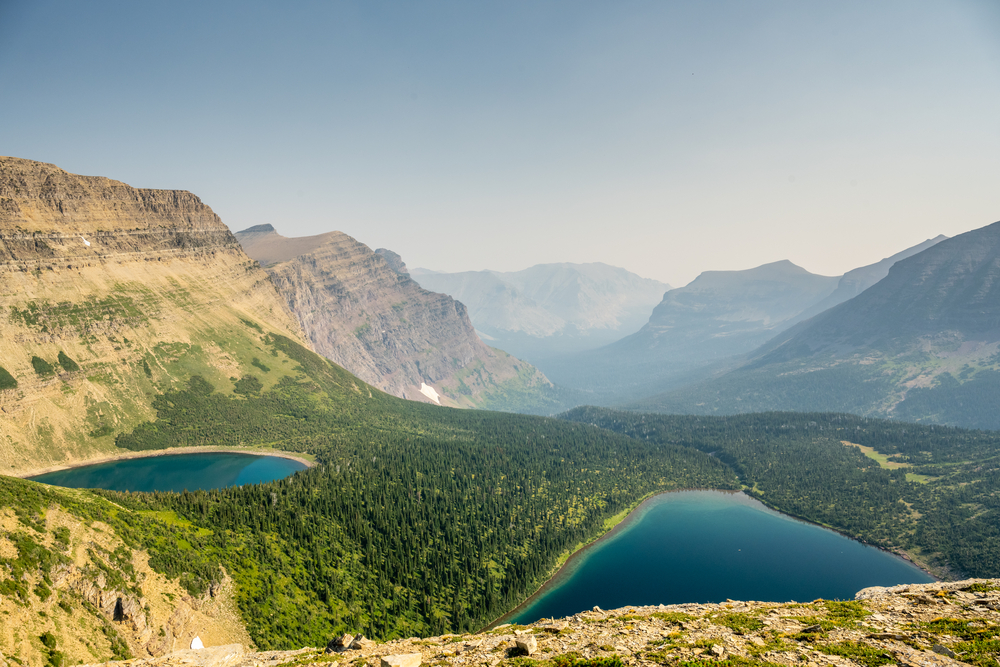
The Pitamakan-Dawson Loop trail is not for the faint-hearted or the weak-calved. It’s the longest day hike in the park, but also one of the top Glacier National Park hikes for scenic vistas. It’s remote and free of crowds, but also exposed in areas, so if heights make your knees quake, you might have to face your fears here.
The trailhead is near Two Medicine Campground. You’ll be ducking in and out of forests and avalanche chutes as you head north and then west, climbing over Rising Wolf Mountain.
There are waterfalls to enjoy and alpine lakes with grazing bighorn sheep, not to mention mountain peaks. As you can tell, every mile of this trail has some interesting scenery to offer, and as such is possibly the best hiking trail in Glacier National Park for experienced hikers.
Paradise Point
- Mileage: 1.4 miles
- Elevation Gain: 160 feet
- Time: 30 minutes
- Difficulty: Moderate
- Type of Trail: Out-and-back
- Trail Guide: Link
The Two Medicine area is known for its more strenuous trails, but Paradise Point is an exception to this rule. It’s less intense and requires less athletic ability than others. The trail begins at the Two Medicine Lake parking lot and meanders along the fringes of the lake.
You’ll see a gorgeous wetland ecosystem at play, and maybe spot some beavers along the way. The hike is especially beautiful at sunrise when the mountains surrounding it are reflected in its sapphire waters.
Hikes Outside of Glacier National Park
Only 11 minutes away in Flathead National Forest is a delightful trail that should be mentioned as it’s close enough to Glacier to be within easy reach.
Columbia Mountain Trail
- Mileage: 12 miles
- Elevation Gain: 4,000 feet
- Time: 8-9 hours
- Difficulty: Difficult
- Type of Trail: Out-and-back
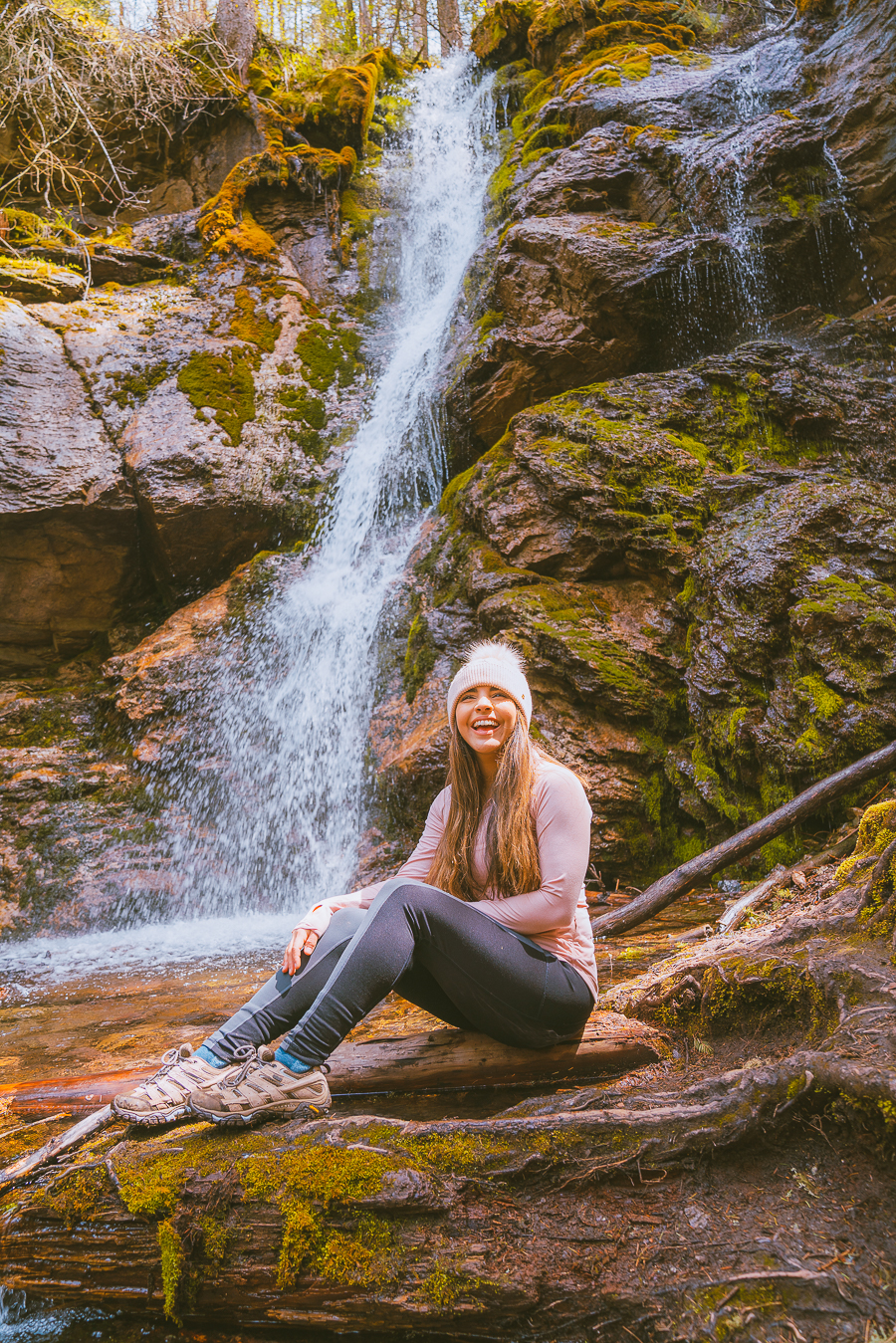
This delightful trail along the Swan Mountain Range may be difficult thanks to the steepness of the trek, but it offers plenty of incredible views to make up for it. There’s an elevation loss in the first two miles, but then the trail climbs quickly as you continue. The trek can get rocky and narrow, so be prepared for this type of terrain.
There are waterfalls interspersed through the trail, though, and wildflowers that burst with color in the spring and summer. You’ll often see glimpses over the rest of Flathead Valley from rocky outcrops. And at the summit of Columbia Mountain Trail you’ll find unparalleled views of Glacier National Park.
How Many Days Do You Need in Glacier National Park?
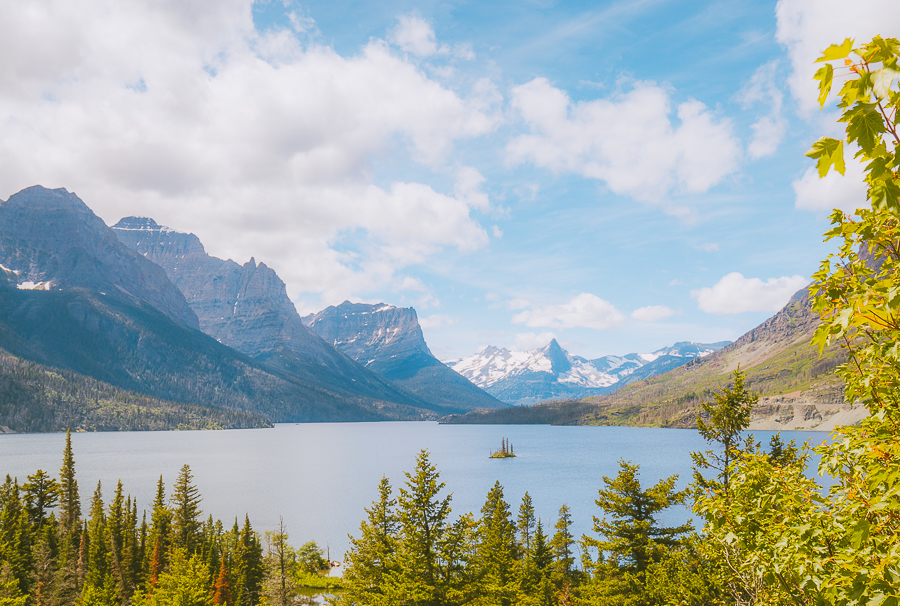
How many days you need depends on how much hiking you plan on doing. If you’re only visiting for the best day hikes in Glacier National Park, then one day can be enough for you. Three days will allow you to explore more of the park’s beautiful regions, while seven days will give you the opportunity to explore all of its hidden gems.
The Best Time to Visit Glacier National Park for Hikes
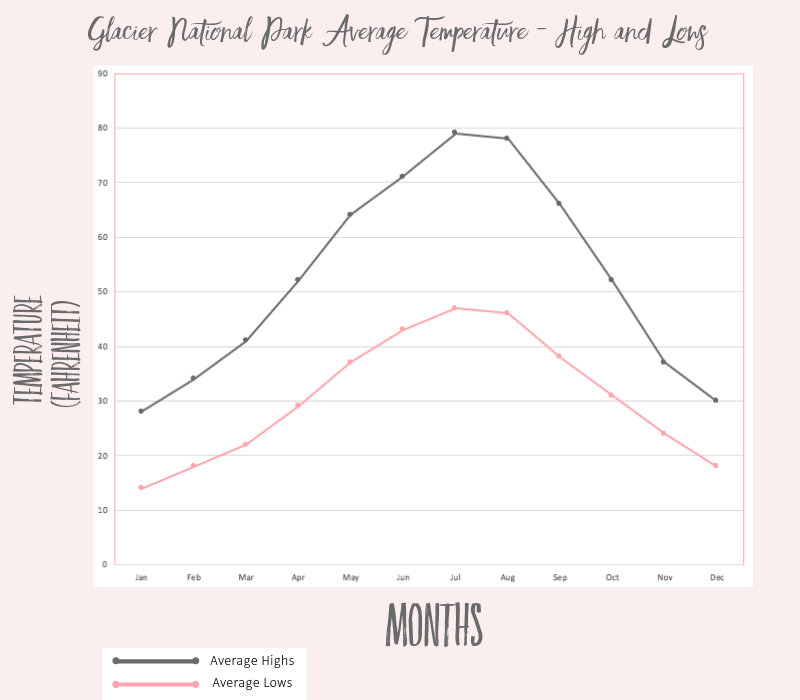
The general consensus on the best time to visit Glacier National Park is in the peak season of summer from late June to mid-September. It offers the best weather and conditions for favorite Glacier National Park activities like rafting, fishing, and driving the Going-to-the-Sun Road, not to mention hiking.
Plus, all the park facilities are open during these months. If you want to enjoy the trails minus the peak crowds, though, aim for mid-September.
Tips for Visiting the Best Trails in Glacier National Park
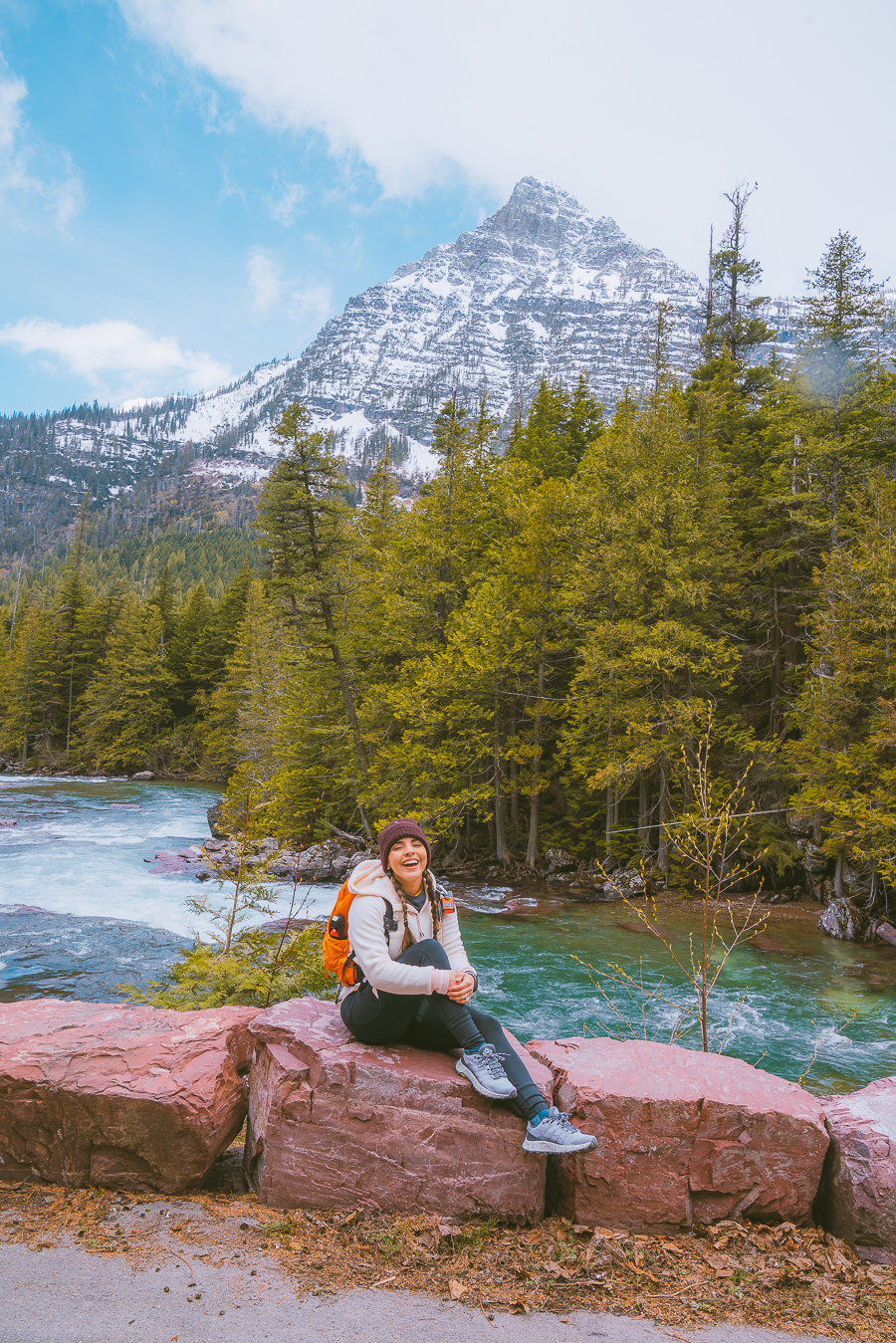
- Glacier National Park has a small window of prime hiking time during the year, and it tends to get dense with avid hikers and trail blazers. The best way to avoid crowds is to start out early and beat the rush.
- Trails in the Many Trails area of Glacier National Park are often closed due to bear activity. Because of this, it’s a good idea to check with a ranger on the status of the trail you plan on trekking. Bringing bear spray and following wildlife safety tips is always a good idea.
- Parking lots fill up fast, so arrive early, preferably by 8 am to secure your place.
Wrap-Up on Glacier National Park Best Hikes
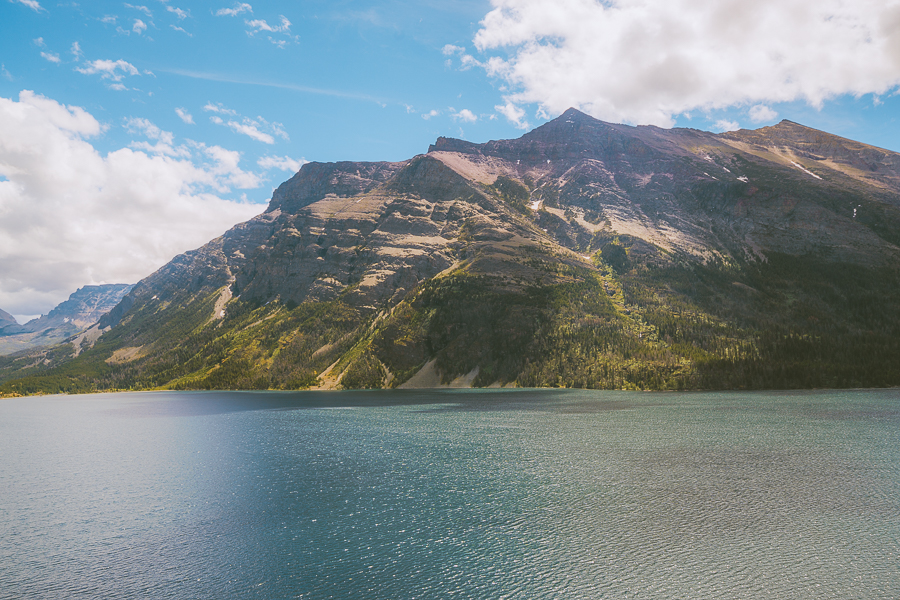
Hikes in Glacier National Park are a true delight. Whether you choose to traverse the high mountain peaks or meander the shorter flat trails, there is no wrong way to enjoy yourself here and no shortage of things to do in Glacier.
Glacier National and its surrounding mountains are a true delight to replenish the soul. So take a day or week and re-energize yourself in the green embrace of Mother Nature.
After experiencing the lush wonders of Glacier National Parks’ trails, why not go to the opposite extreme and head for the desert? The hikes in Joshua Tree National Park are almost unrivaled when it comes to desert beauty.

